
GRASS VETCHLING
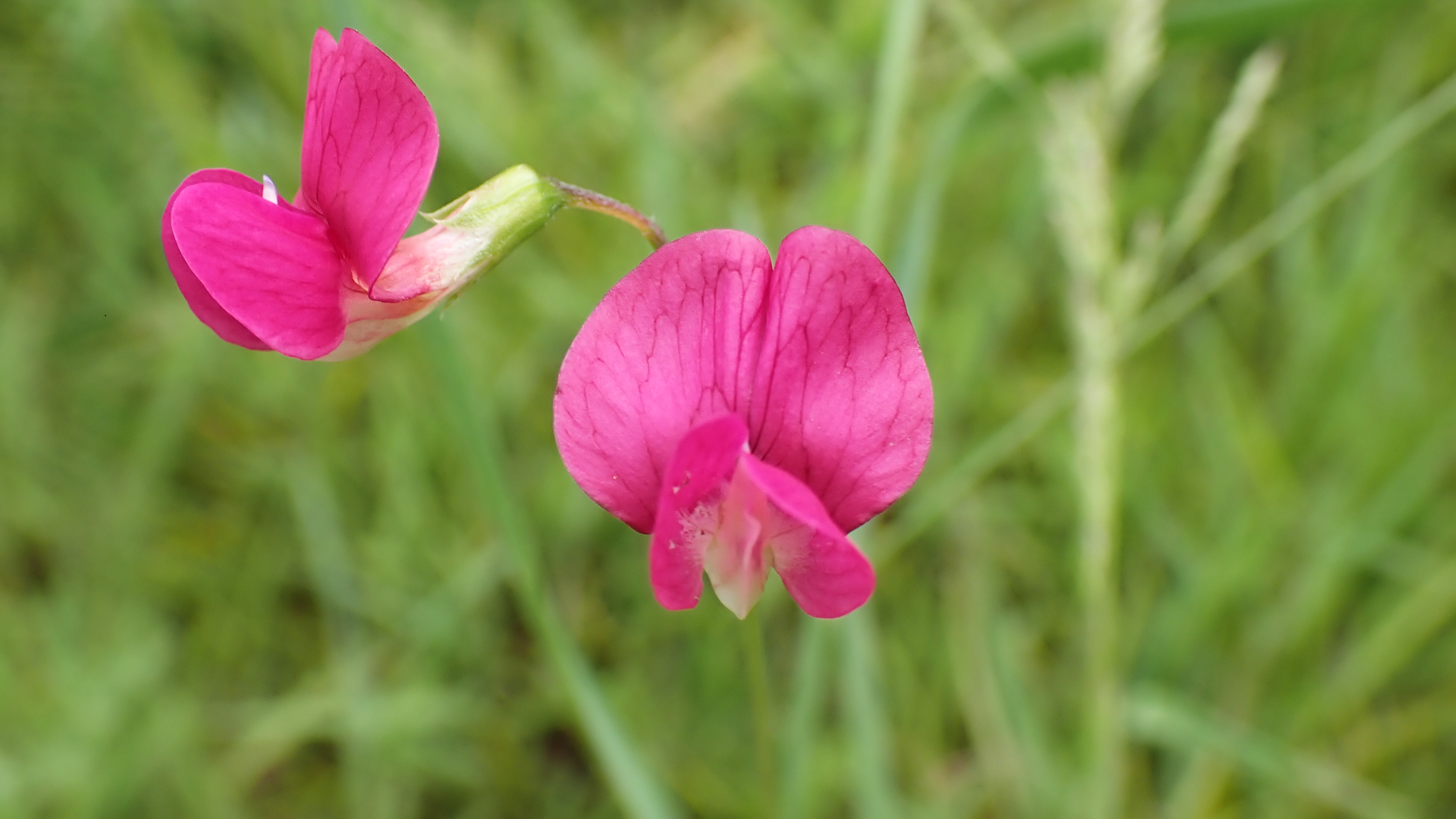
© Raymond Small TQ4792 01/06/2024
Lathyrus nissolia
This delicate member of the Pea family is an annual. It has small crimson flowers, 8-18mm across, and grass-like leaves. The flowers appear either singly or in pairs on a long slender stalk. This plant can often be found in the wildflower meadow from May until July.
BIRD'S-FOOT TREFOIL
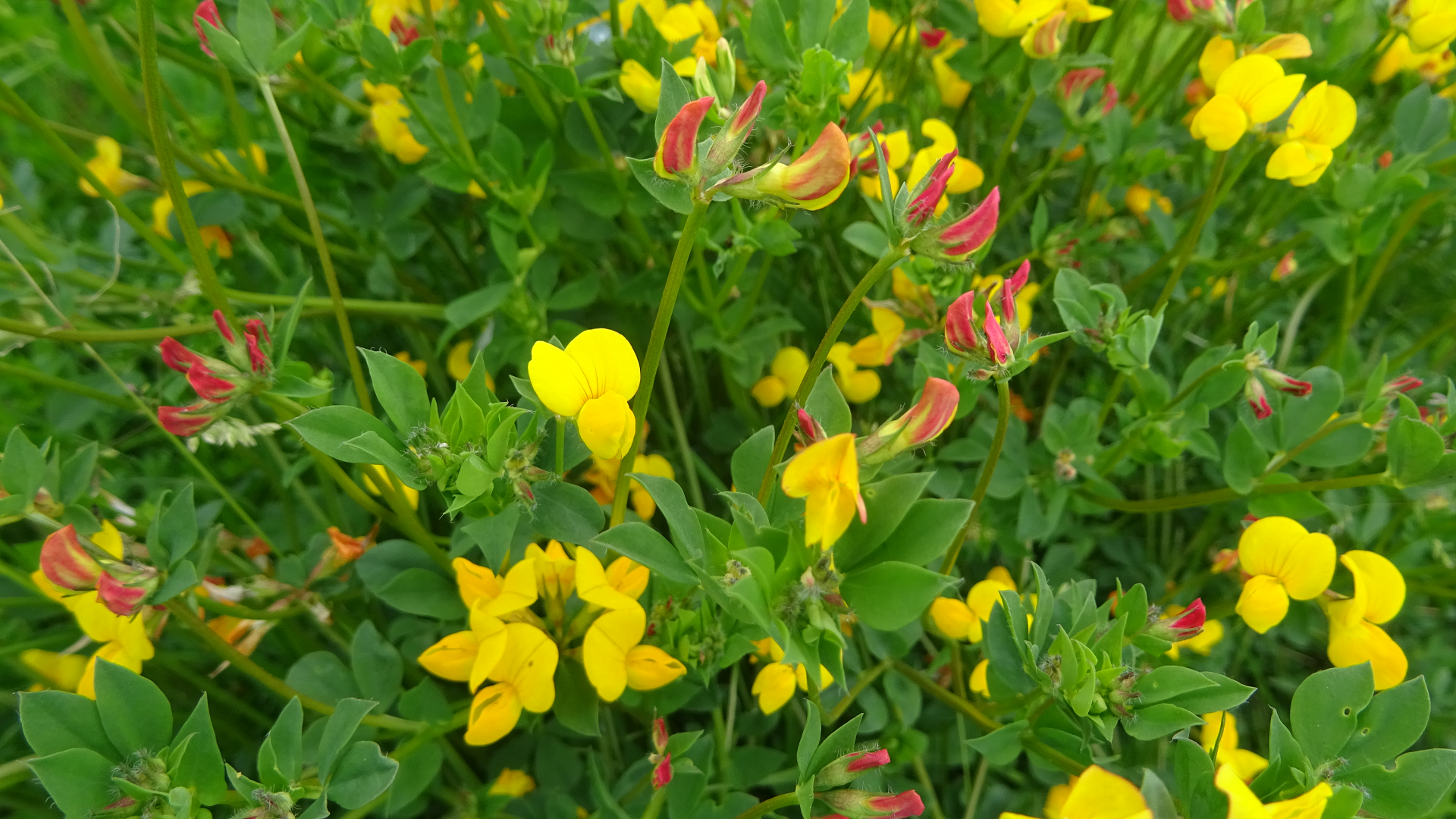
© Raymond Small TQ4792 06/06/2024
Lotus corniculatus
Bird's-foot trefoil is a perennial in the pea family that appears from May until September in grassland habitats. Its yellow flowers are sometimes tinged with red, These sprawling plants usually grow 10-20cm in height. The stem base is woody. Its seed pods look like bird's feet or claws, hence the common name. The leaves have five leaflets and are downy.
SPOTTED MEDICK
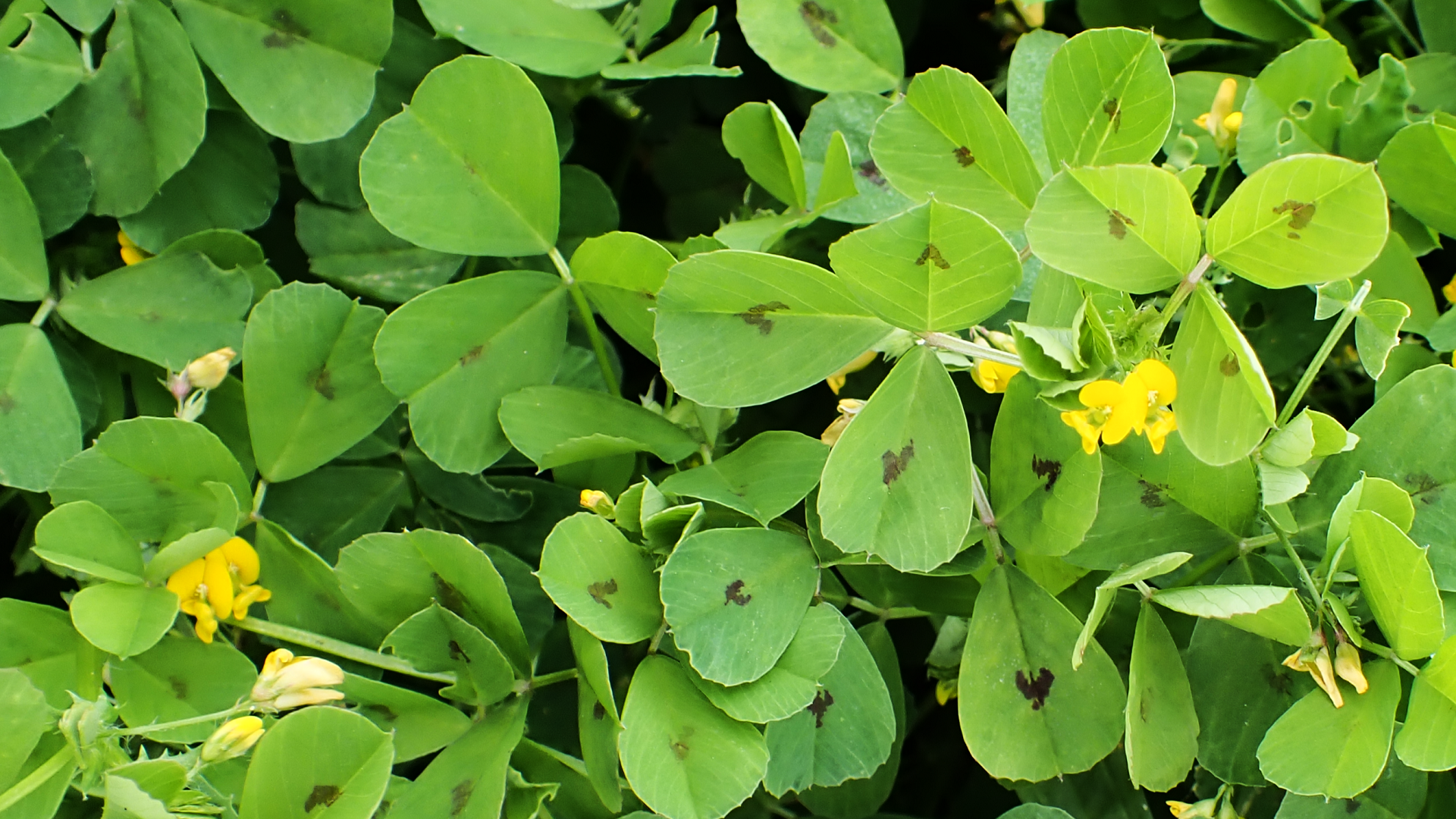
© Raymond Small TQ4792 07/06/2024
Medicago arabica
A member of the Pea family which has dark spotted trefoil leaves. Occasionally there may be a lack of spots in which case other details have to be examined. The leaflets are heart-shaped with a tiny point near the apex. Yellow flowers measure 5-7mm across and may be solitary, or several may be together. The pod is spiralled with 4-7 turns.
WHITE CLOVER
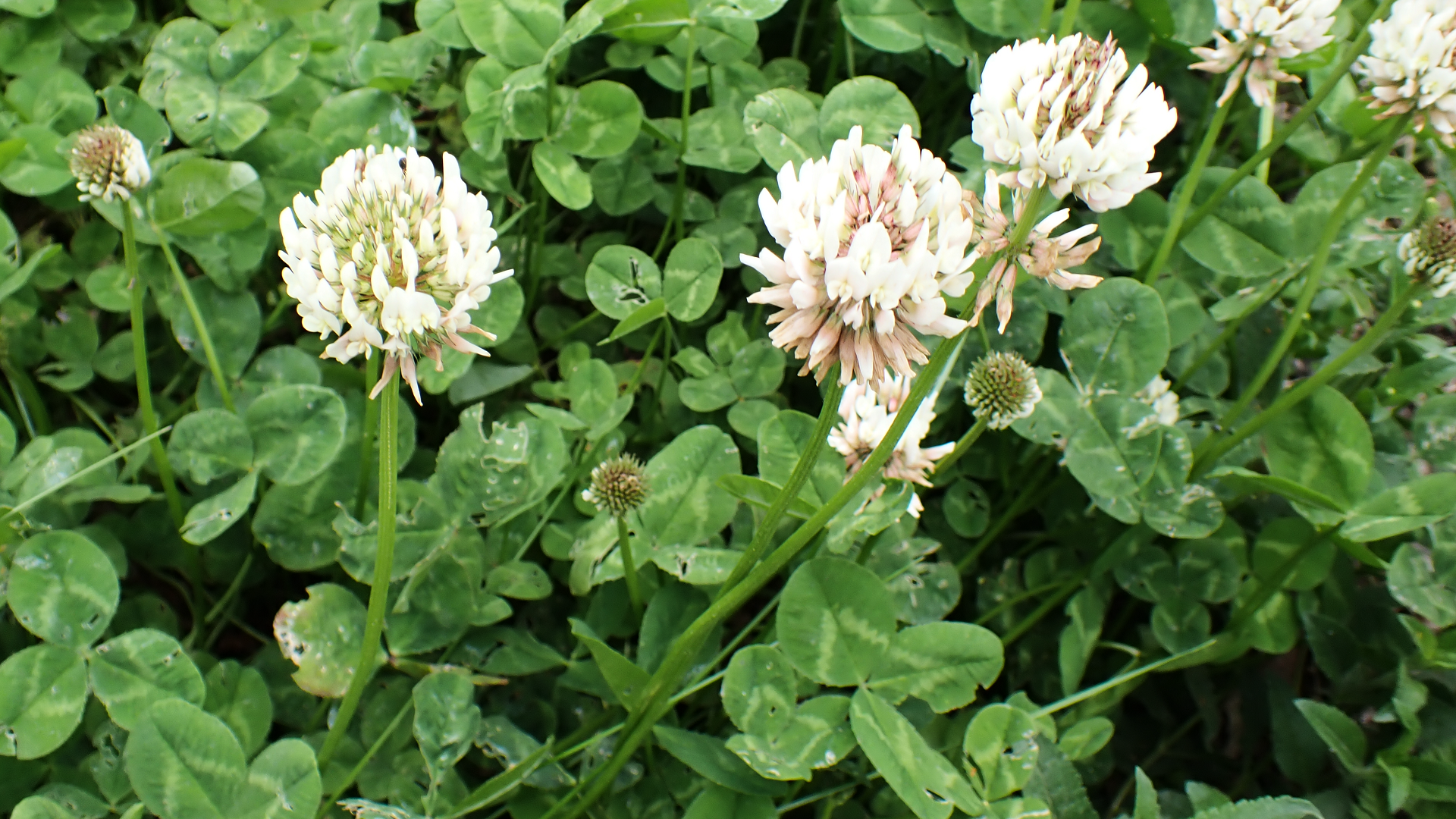
© Raymond Small TQ4792 06/06/2024
Trifolium repens
A low-growing creeping perennial that almost always has trifoliolate leaves; the shape characterised by the leaf being divided into three leaflets, however occasionally there may be four or more.
Tri in Latin means 'three' and
folium means 'leaf'. The species name
repens is Latin for 'creeping'. The whitish flower-heads, usually 15-20mm across, often develop a pinkish or creamy tinge with age. The stems operate as stolons so the plant often forms mats with the stems creeping as much as 18cm each year and rooting at the nodes.
FOXGLOVE
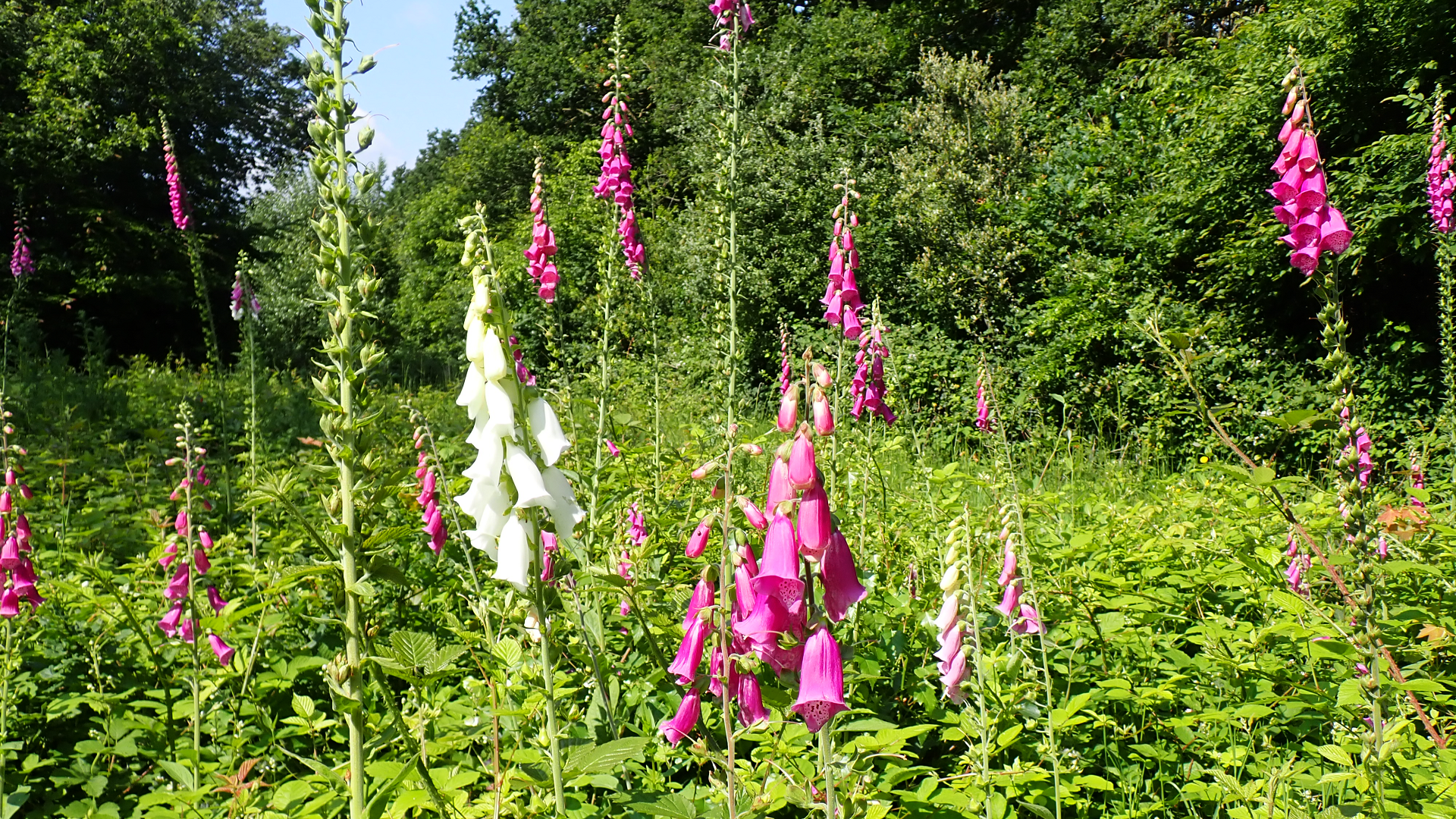
© Raymond Small TQ4693 06/06/2024
Digitalis purpurea
Foxglove has tube-shaped, magenta or white flowers around the stem which open in sequence from the bottom up. Flat leaves form at the base and the upright spikes grow up to 1.5m tall. This woodland plant is a favourite of bees and moths, however it is deadly poisonous to humans if ingested.
OX-EYE DAISY
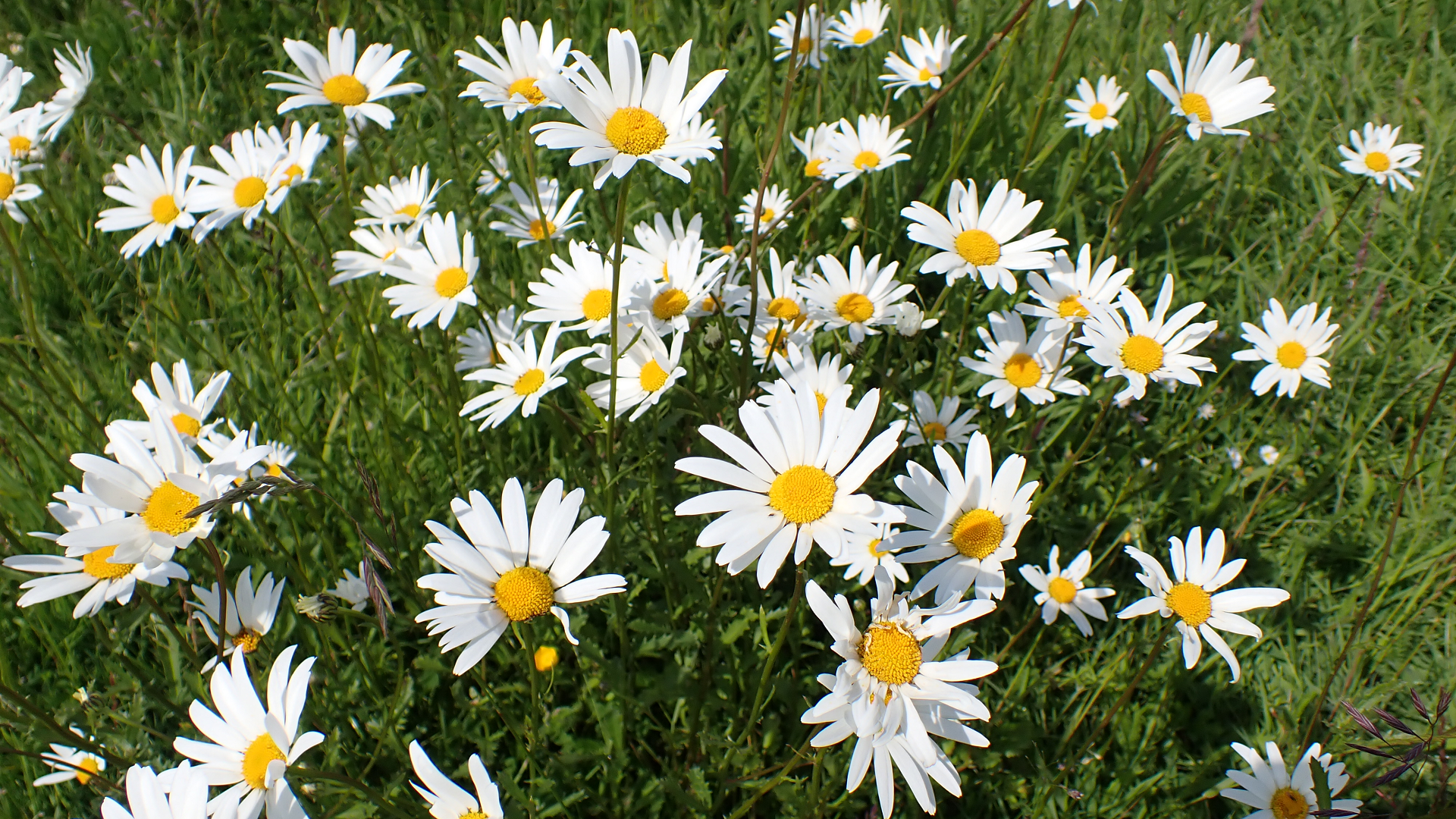
© Raymond Small TQ4792 11/06/2024
Leucanthemum vulgare
Ox-eye daisy has round flower-heads that appear on single stems that grow up to 60cm tall. The basal leaves are spoon-shaped and those along the stem are thin and jagged. This plant is very common in the wildflower meadows from June until September.
BRAMBLE
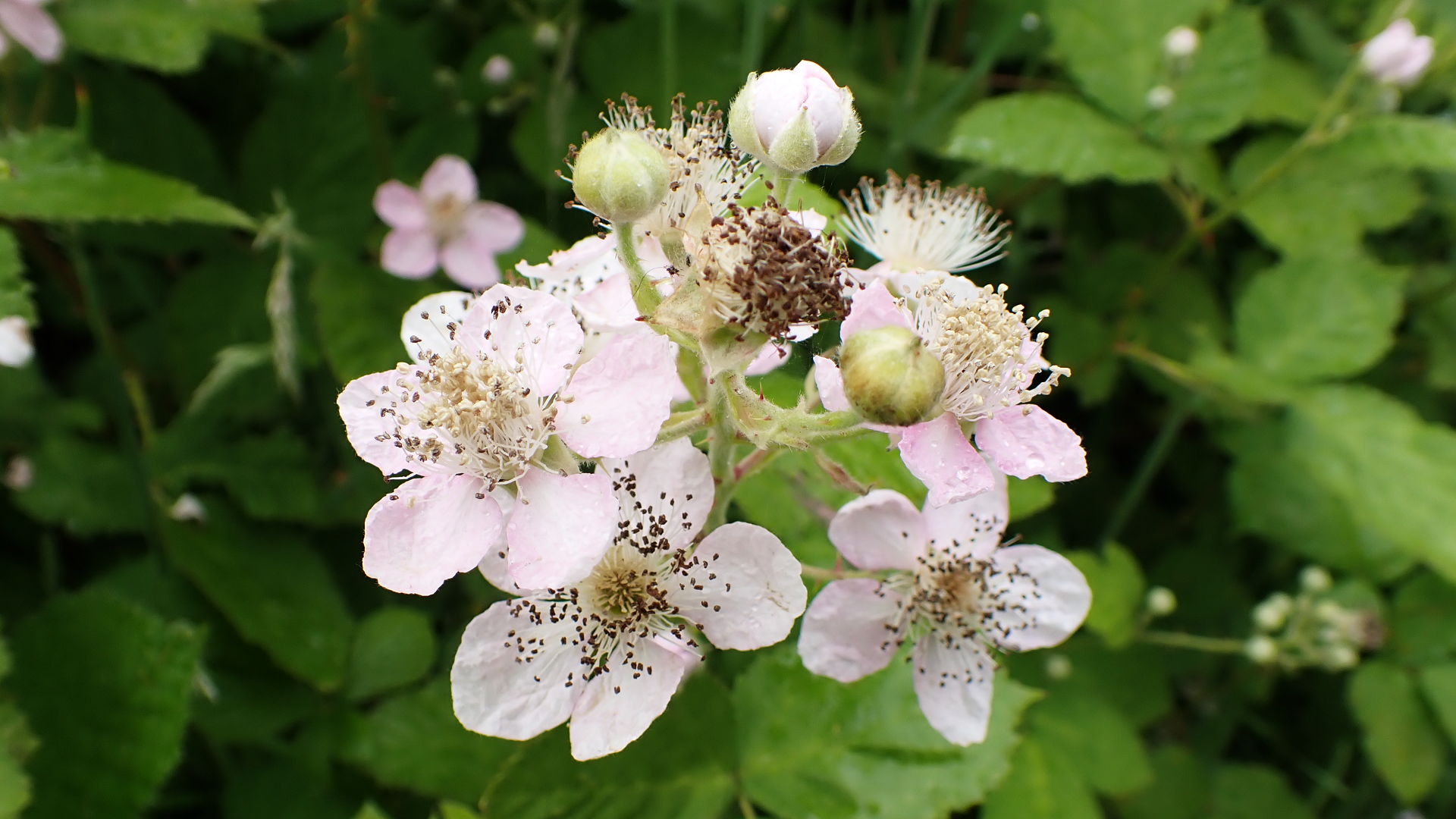
© Raymond Small TQ4792 11/06/2024
Rubus agg.
In Britain there are several hundred species of bramble that thrive in a range of habitats. Most are self-fertile, others are pollinated by insects visiting for nectar and pollen. Blackberries the fruits that appear after the flowers become a vital food source for all types of creatures.
BLACK KNAPWEED
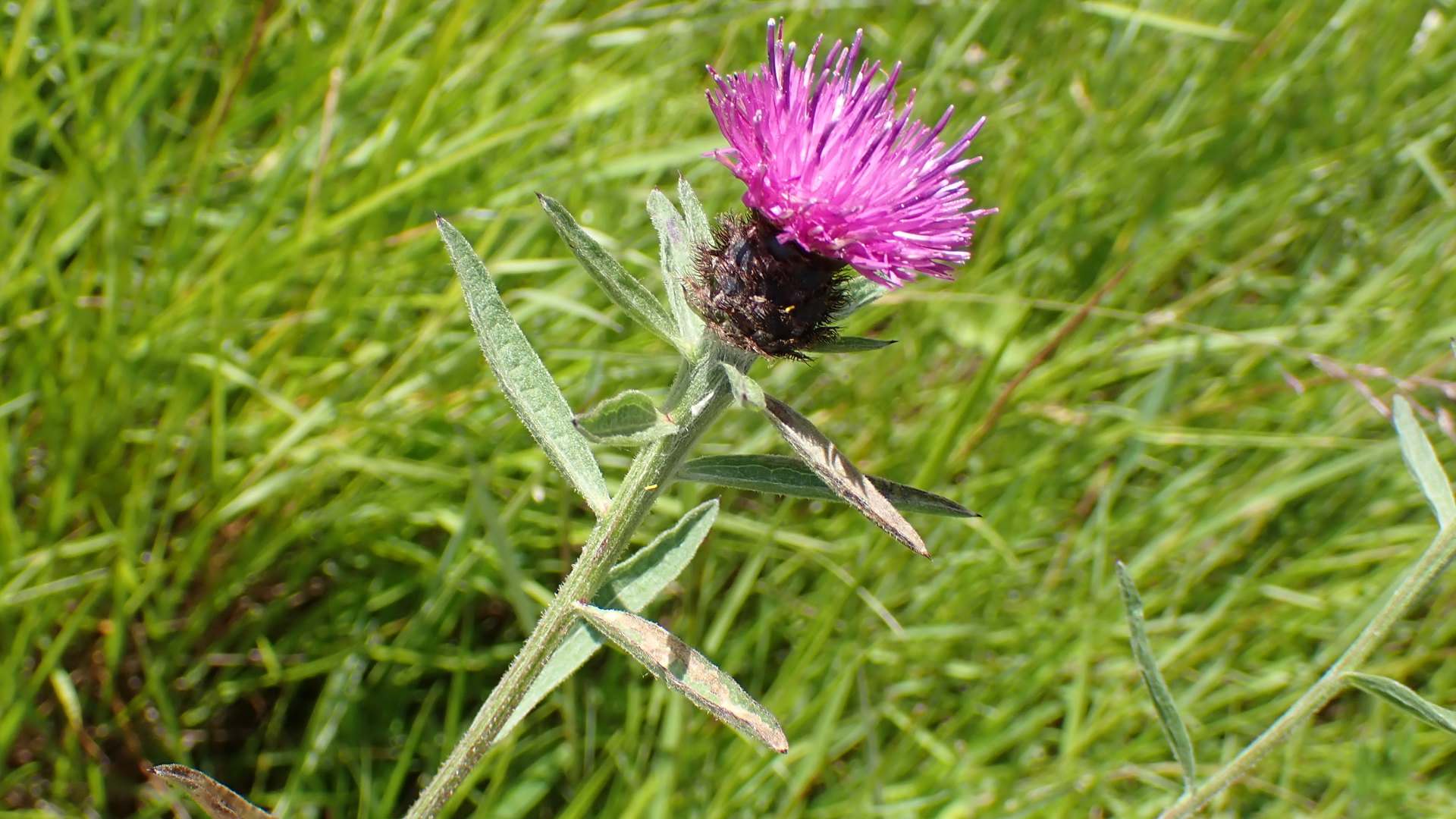
© Raymond Small TQ4792 17/06/2024
Centaurea nigra
A thistle-like plant that appears in the meadows from June until September. The purple composite flower heads are comprised of many small florets (tiny flowers), surrounded by long, ragged, pink bracts. The oblong leaves are deeply divided. Also known as Common knapweed.
HIMALAYAN BALSAM
© Raymond Small TQ4792 12/06/2024
Impatiens glandulifera
Himalayan balsam is an invasive plant often found near inland water. It was introduced to Britain in 1839 by Victorian plant hunters who liked its beautiful pink flowers and exploding seed pods.
CORVIDS
The Crow family, collectively know as 'Corvids', are stout-billed perching birds known for their high intellect. Corvids can solve problems, recognise faces and use tools. There are eight British species; Carrion crows, Jackdaws, Magpies and Jays are the four usually seen in Hainault Forest.

© Raymond Small TQ4792 11/06/2024
Corvus corone
Crows are opportunists and usually go for easy food. Their natural diet mainly consists of nuts, seeds, fruit, grains, insects and rubbish left behind by humans. They also feed on roadkill which is why they are referred to as 'Carrion' Crows. Research has shown that crows love eating unsalted peanuts over most other things.
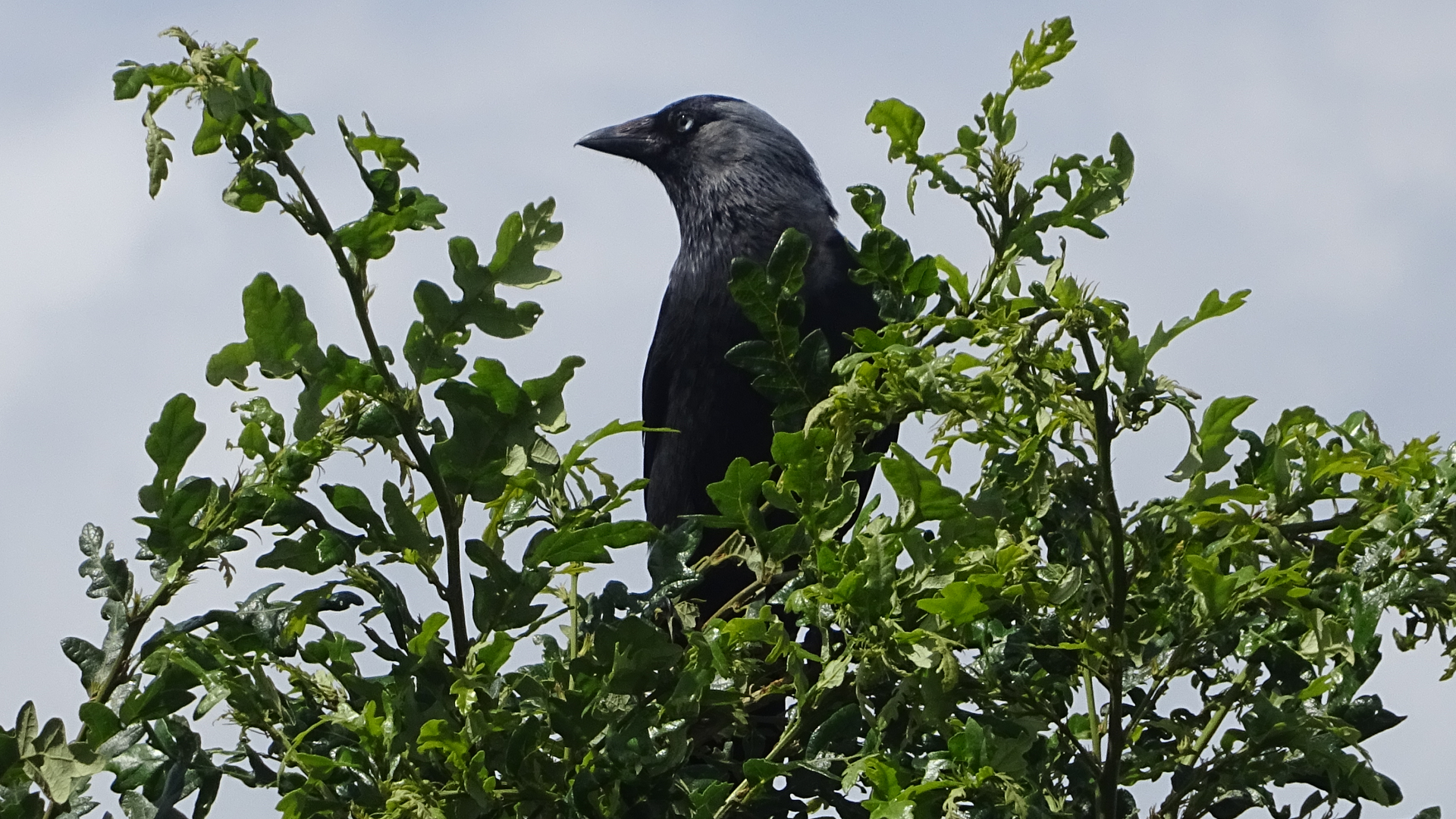
© Raymond Small TQ4792 11/06/2024
Coloeus monedula
Jackdaws have a distinctive silvery sheen to the back of the head and conspicuous pale eyes. They are the smallest British crows.
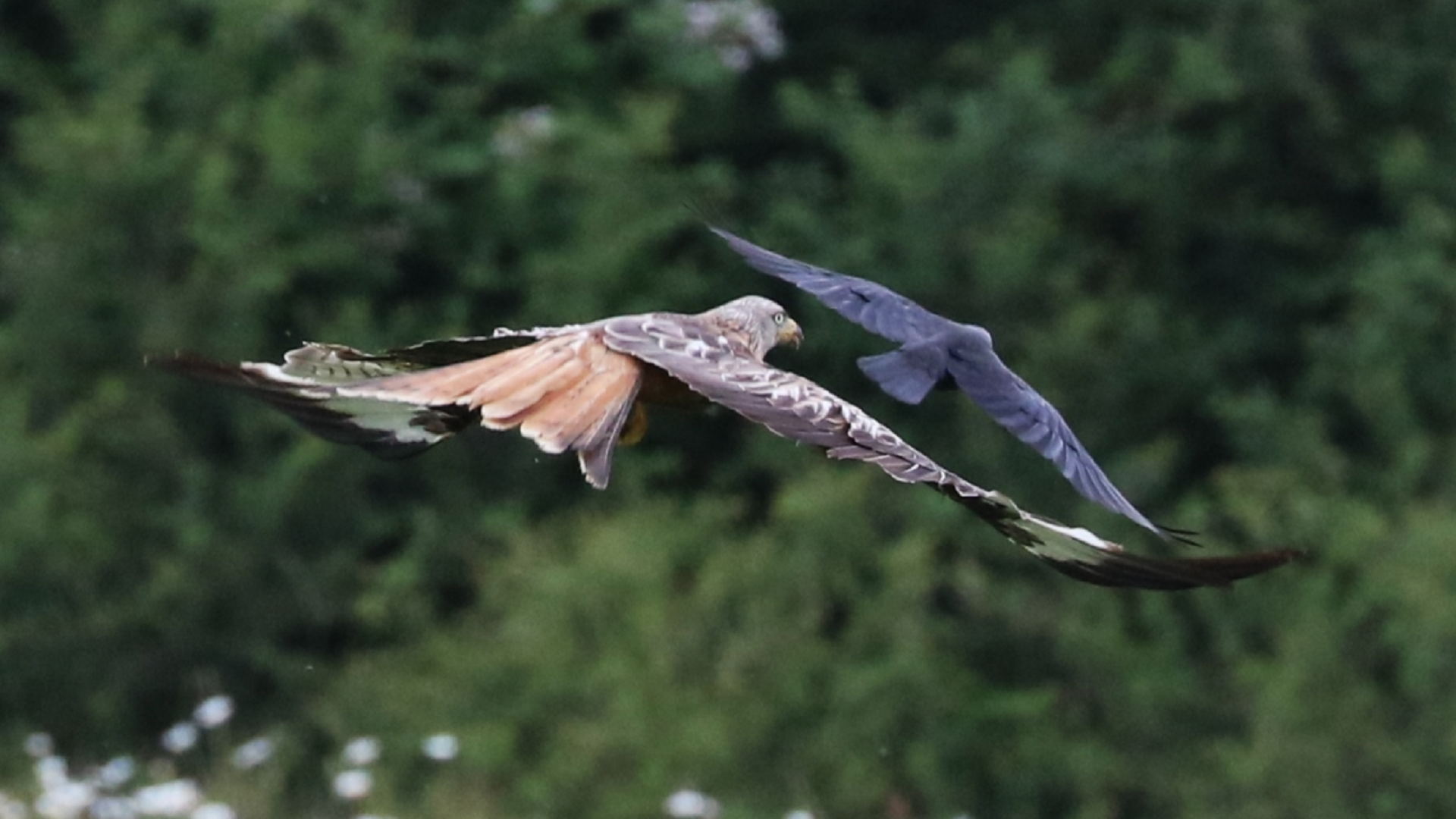
© Michael Trump TQ4792 19/06/2024
Corvids are sometimes blamed for the decline in garden bird numbers because they invade nests, however they often chase off predator type birds that might cause more damage. Here a solitary Jackdaw is seeing off a Red Kite on a hunting mission. Corvids have also been seen chasing away foxes in the same area.
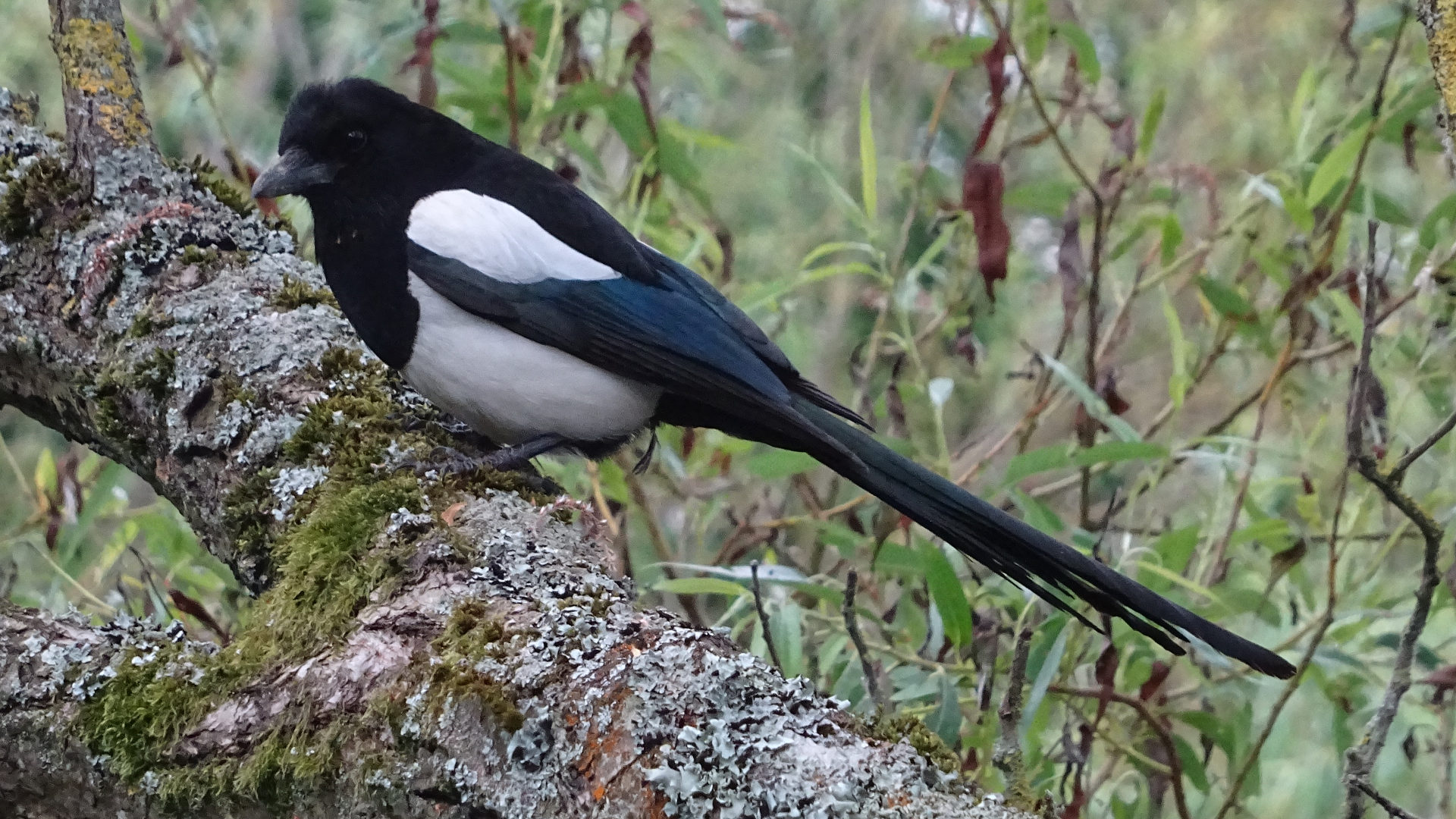
© Raymond Small TQ4792 12/06/2024
Pica pica
Magpies were rarely seen in Hainault before the 1960s, but are now well established and regularly heard chattering noisily in the treetops. The black and white feathers of the Magpie have a blueish iridescent sheen when viewed close up and the tails may appear greenish.
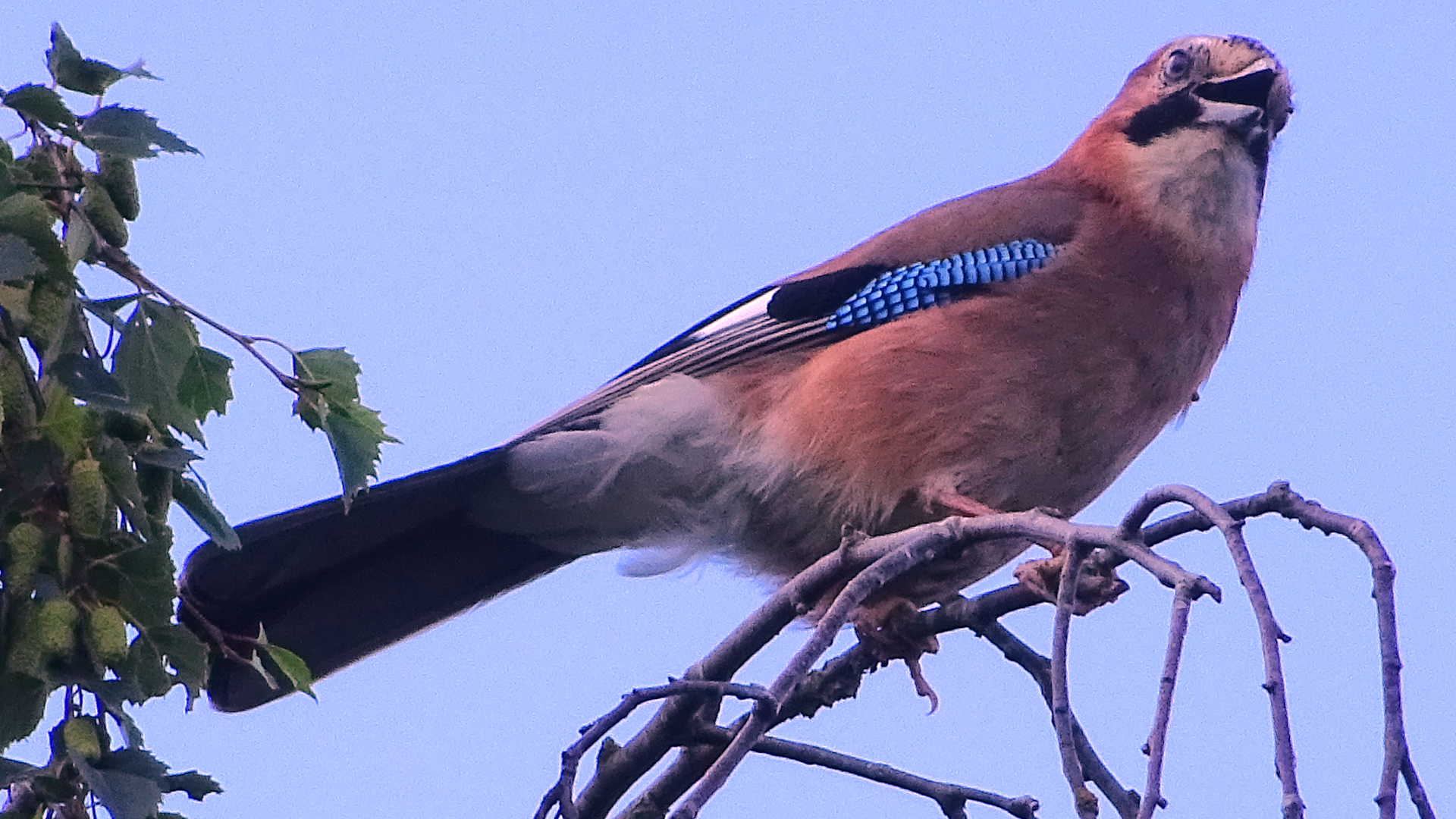
© Raymond Small TQ4792 05/06/2024
Garrulus glandarius
Unlike other corvids the colourful Jay is a rather shy bird. This may be because they were hunted by the Victorians to provide feathers for ladies' hats. During autumn they bury acorns and chestnuts ready for collection when food is scarce. They sometimes forget where their caches have been hidden which assists trees in spreading to other areas.
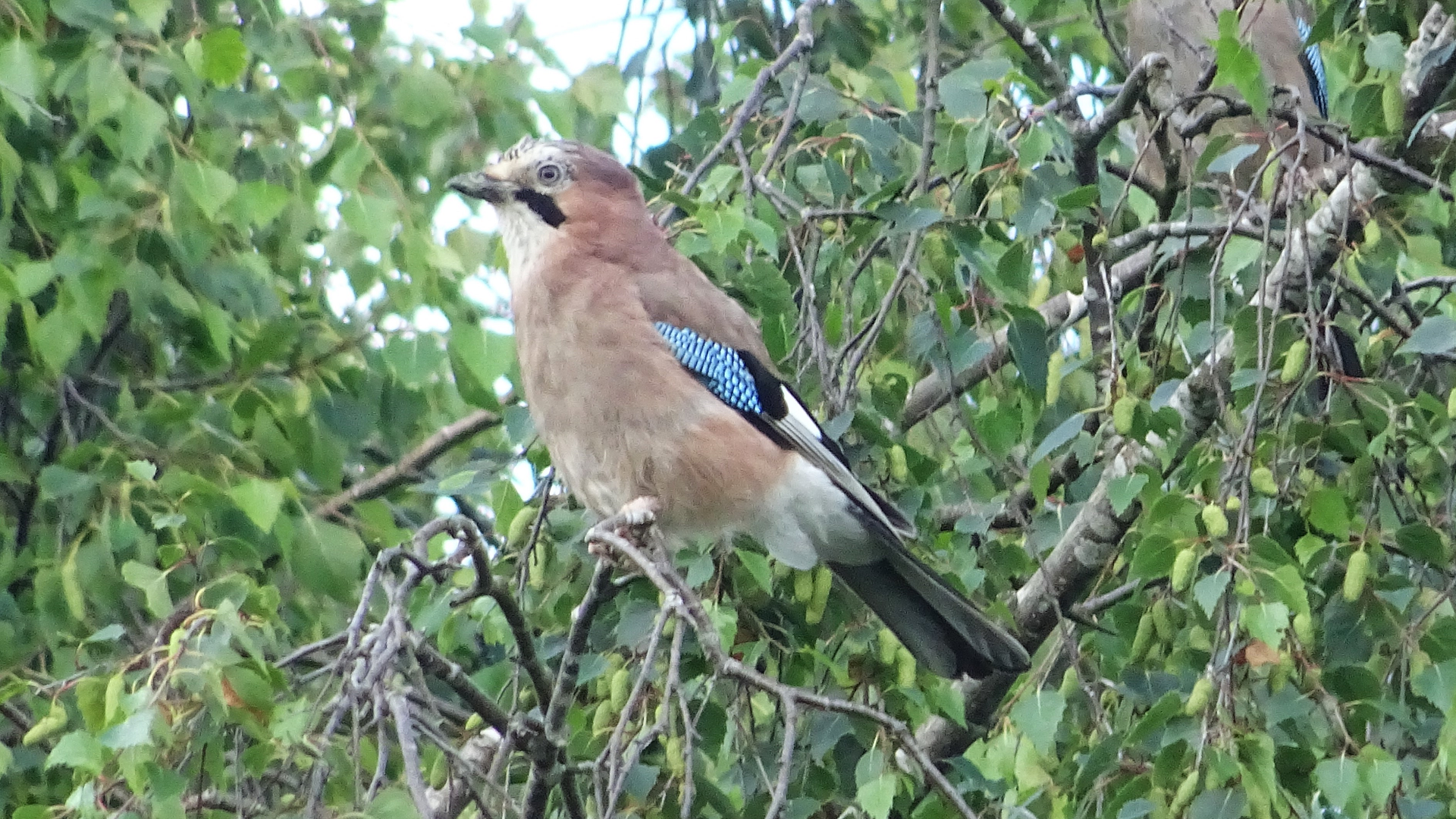
© Raymond Small TQ4792 05/06/2024
Jays often stay under the cover of trees in wooded areas. The collective noun for a group of Jays can be either a 'Scold' or 'Band'.
WHITETHROAT
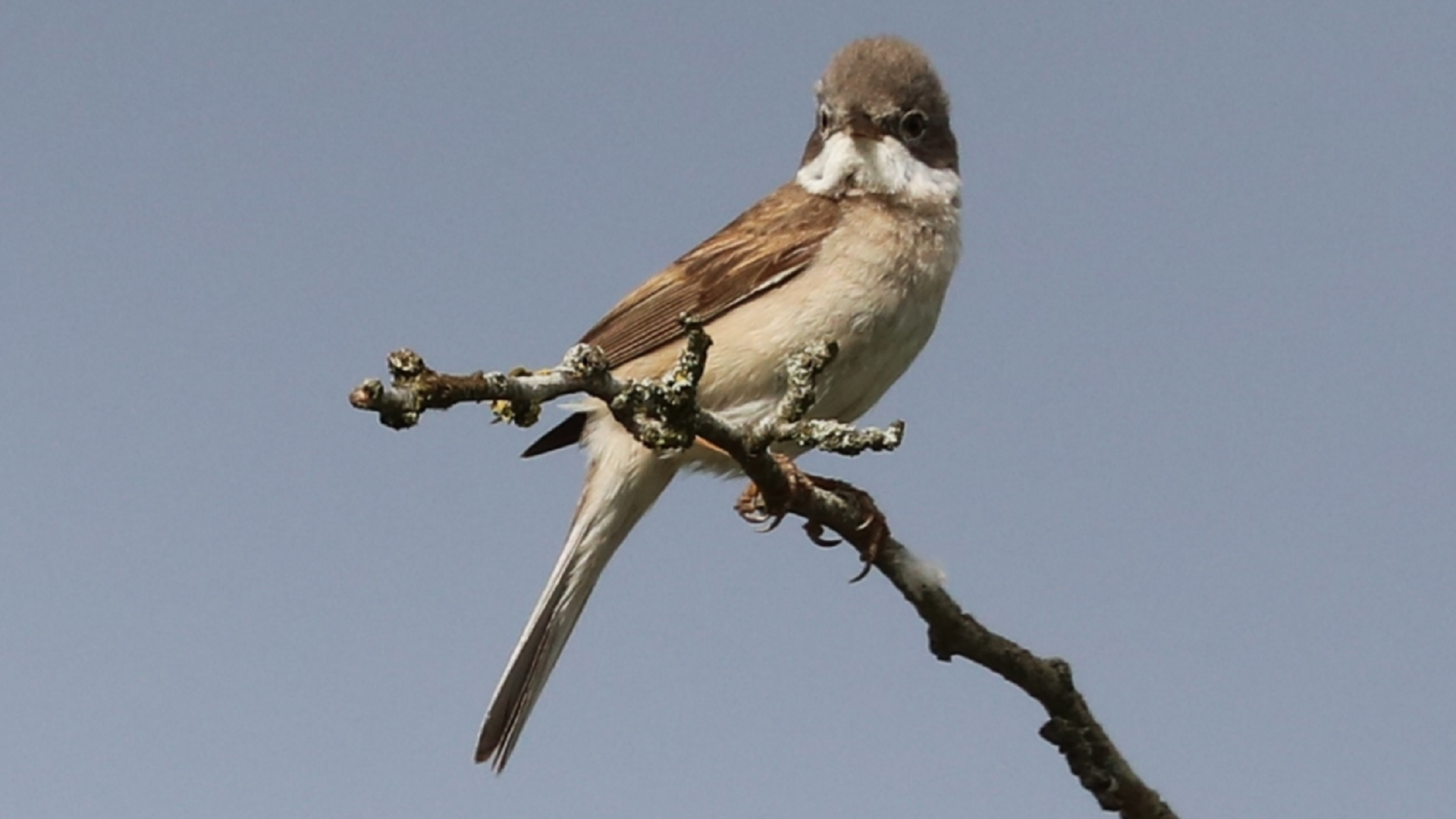
© Michael Trump TQ4792 12/06/2024
Sylvia communis
The Whitethroat is a medium-sized warbler that visits from Africa during summer.
ROBIN
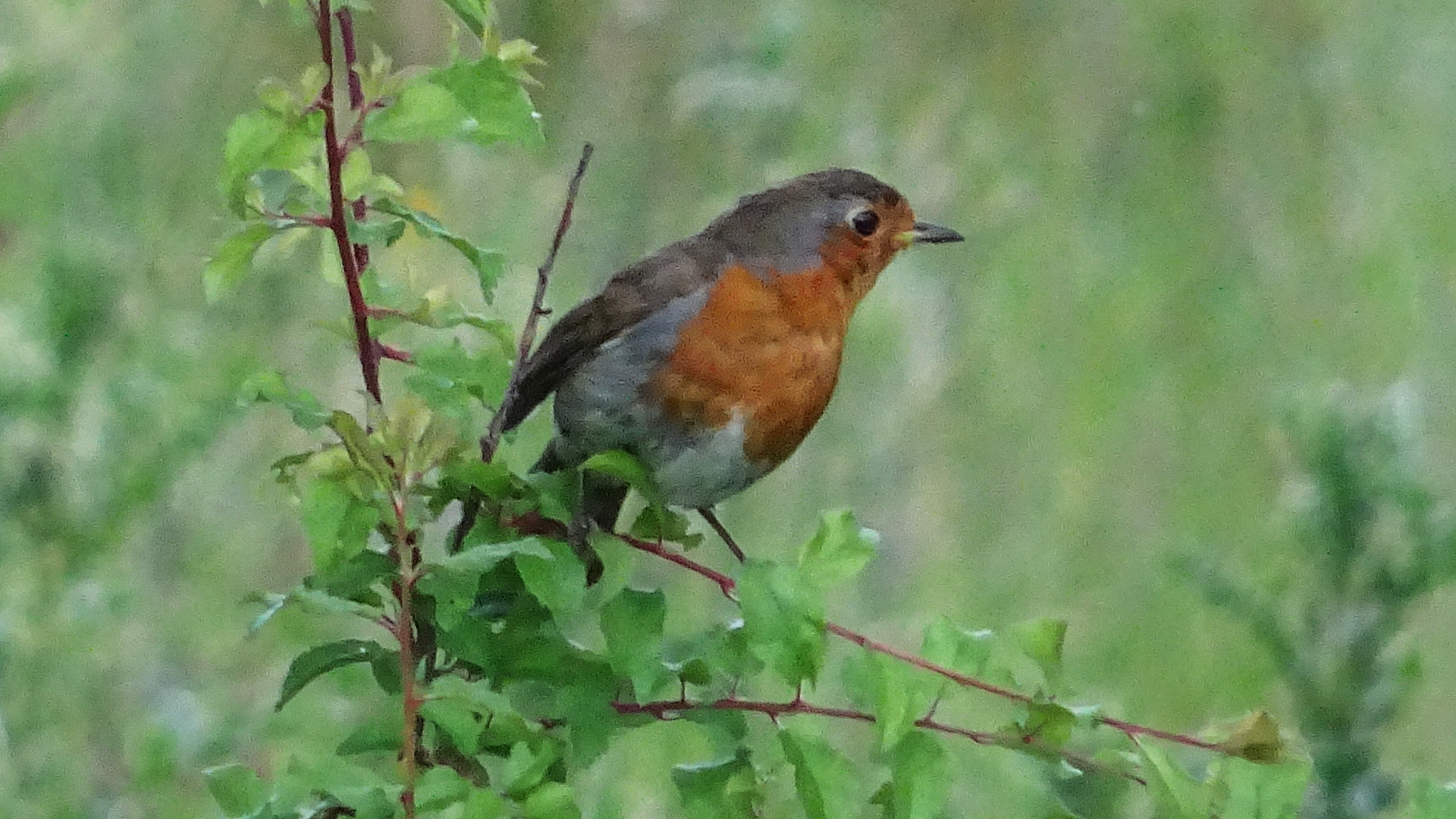
© Raymond Small TQ4792 12/06/2024
Erithacus Rubecula
Robins sing throughout the year, During the breeding season males normally start their morning song an hour before civil sunrise, the moment when the centre of the Sun is six degrees below the horizon. They usually end their daily singing about half-an-hour after sunset. Nocturnal singing sometimes occurs in urban areas with street lighting where robins choose to sing at night to avoid persistent environmental daytime noise.
SKYLARK
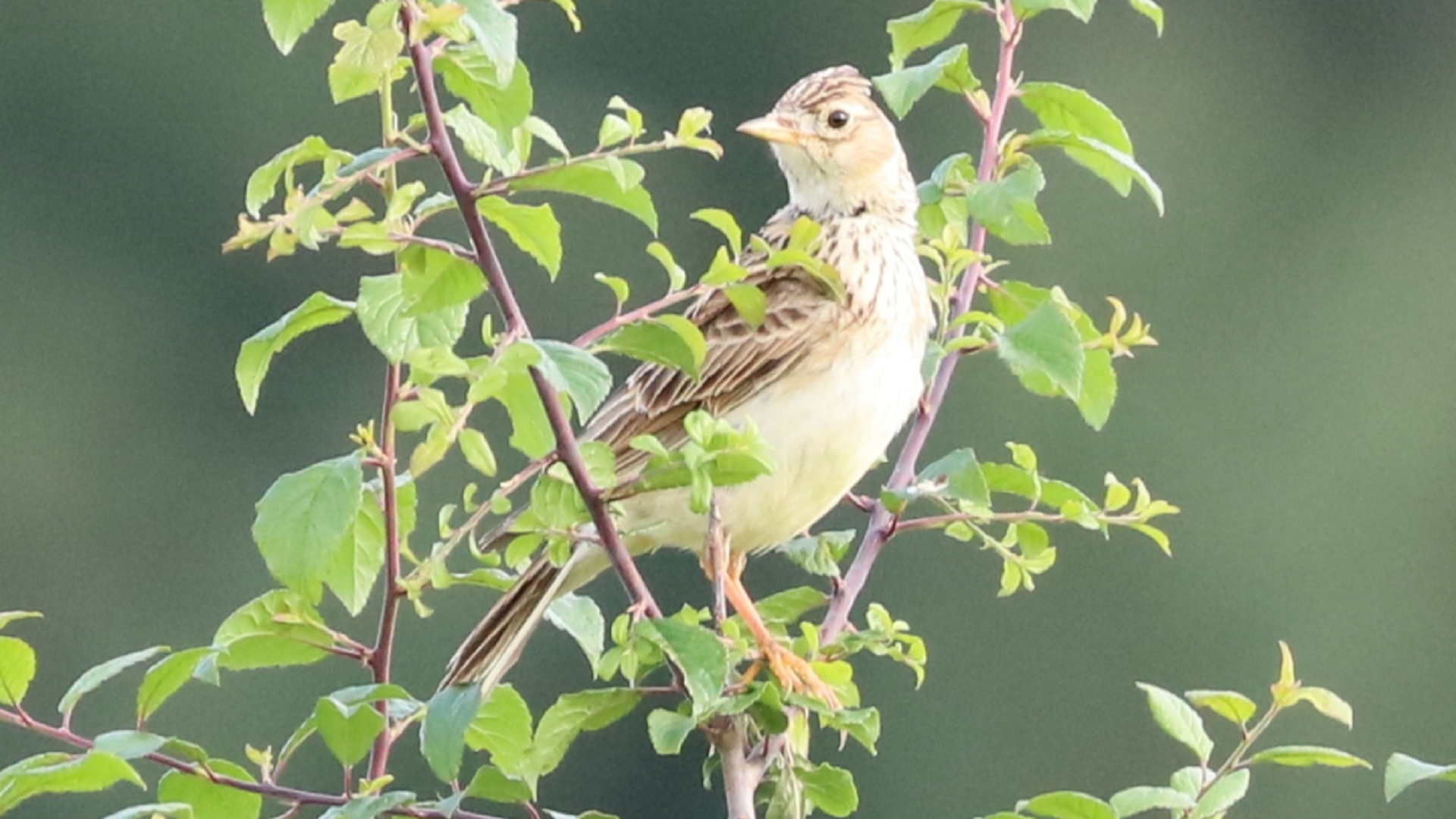
© Michael Trump TQ4792 14/06/2024
Alauda arvensis
The Skylark is larger than a sparrow and smaller than a starling. It has a small crest on the head which is raised when the bird gets excited or alarmed. It flies vertically up in the air and can often be heard singing while on the wing.
WOOD PIGEON
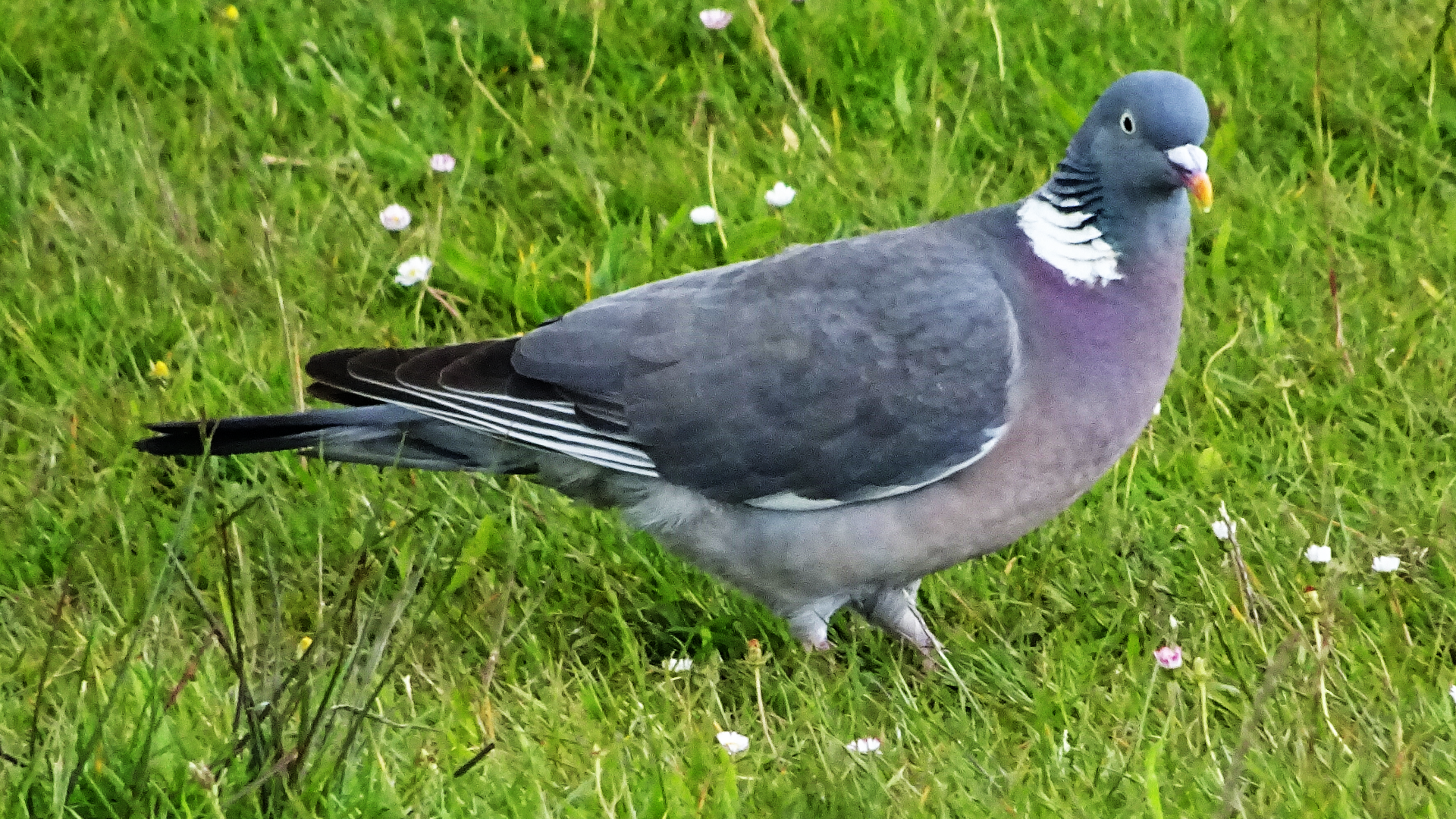
© Raymond Small TQ4792 11/06/2024
Columba Palumbus
The largest species of Pigeon found in Britain. Although a common resident, large numbers migrate to this country from the continent during autumn and winter. They are generally a lot warier of humans than other types of pigeon although it is possible to gain their trust.
CANADA GOSLINGS
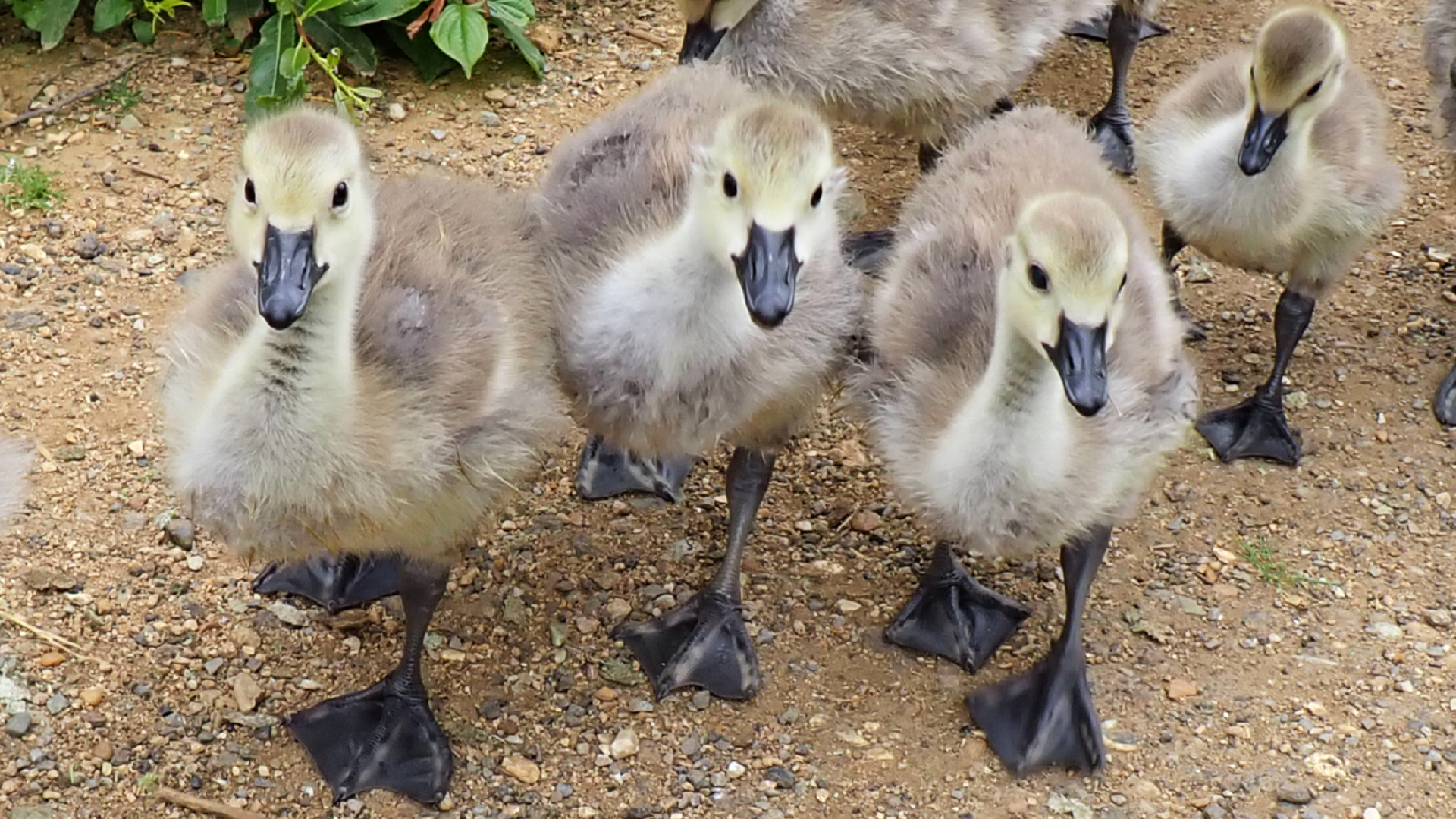
© Raymond Small TQ4792 12/06/2024
Branta Canadensis
Canada goslings often stay with their parents for their first year. Canada geese feed on grass and are attracted to mown areas because it gives them a clear view of any approaching predators. They have a tendency to move away from locations where grass has been allowed to grow longer.
MUNTJAC
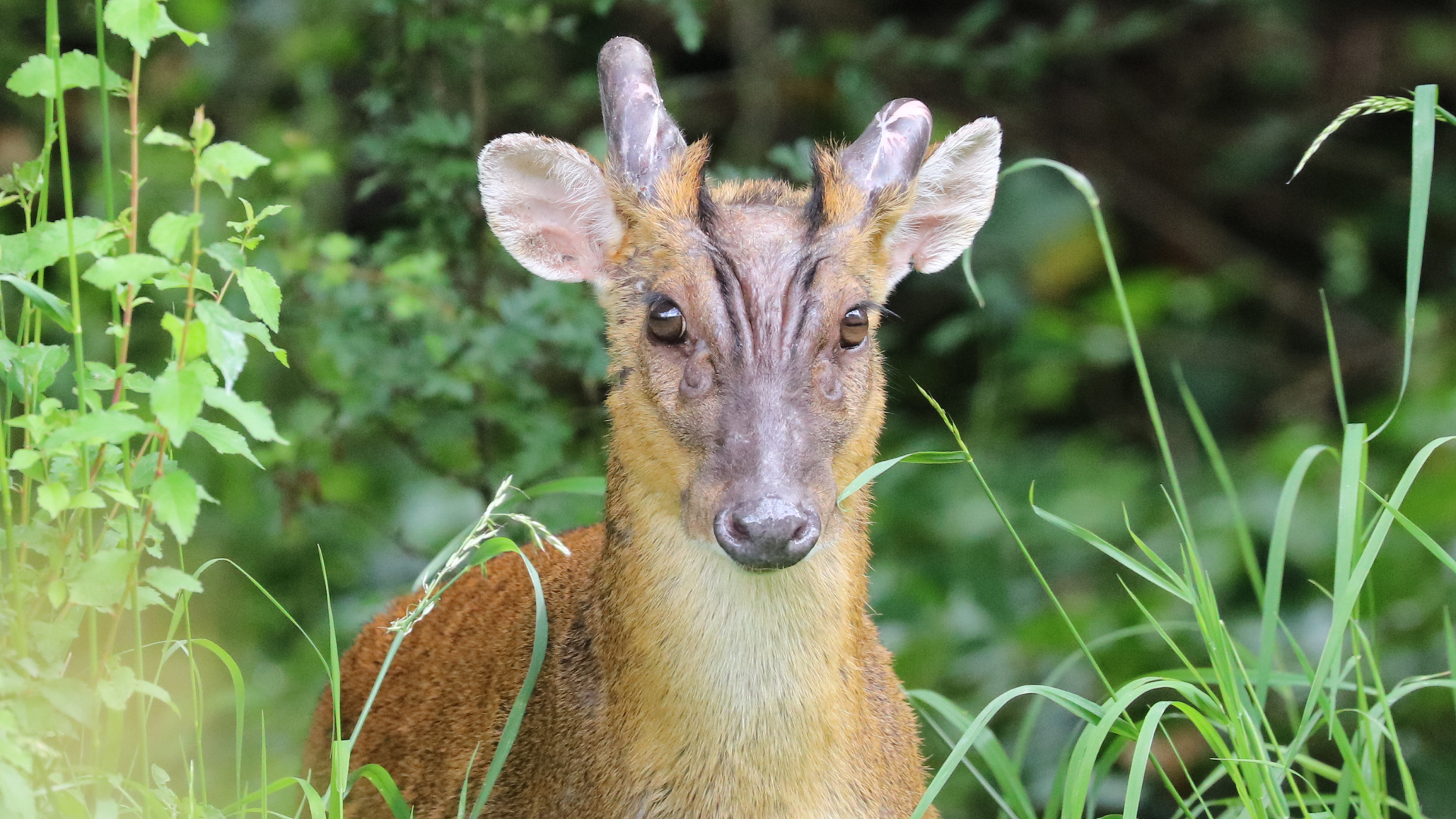
© Michael Trump TQ4792 15/06/2024
Muntiacus reevesi
Male muntjacs (Bucks) have short, unbranched antlers that slope backwards. Muntjacs feed on woodland shrubs and herbs including brambles. This can lead to the ground cover vanishing and has been linked to a decline in birds such as nightingales.
WOOD MOUSE
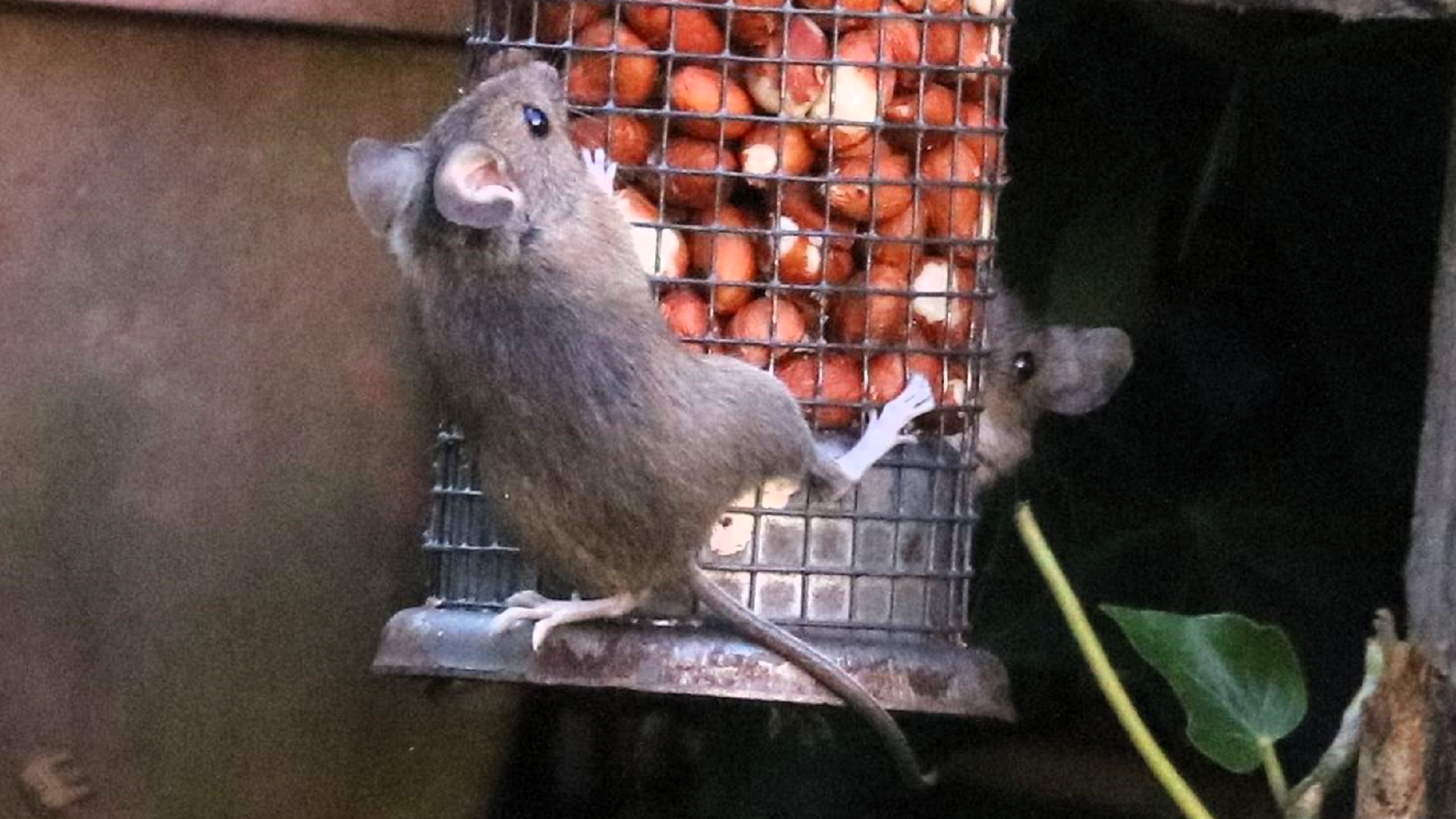
© Michael Trump TQ4491 20/06/2024
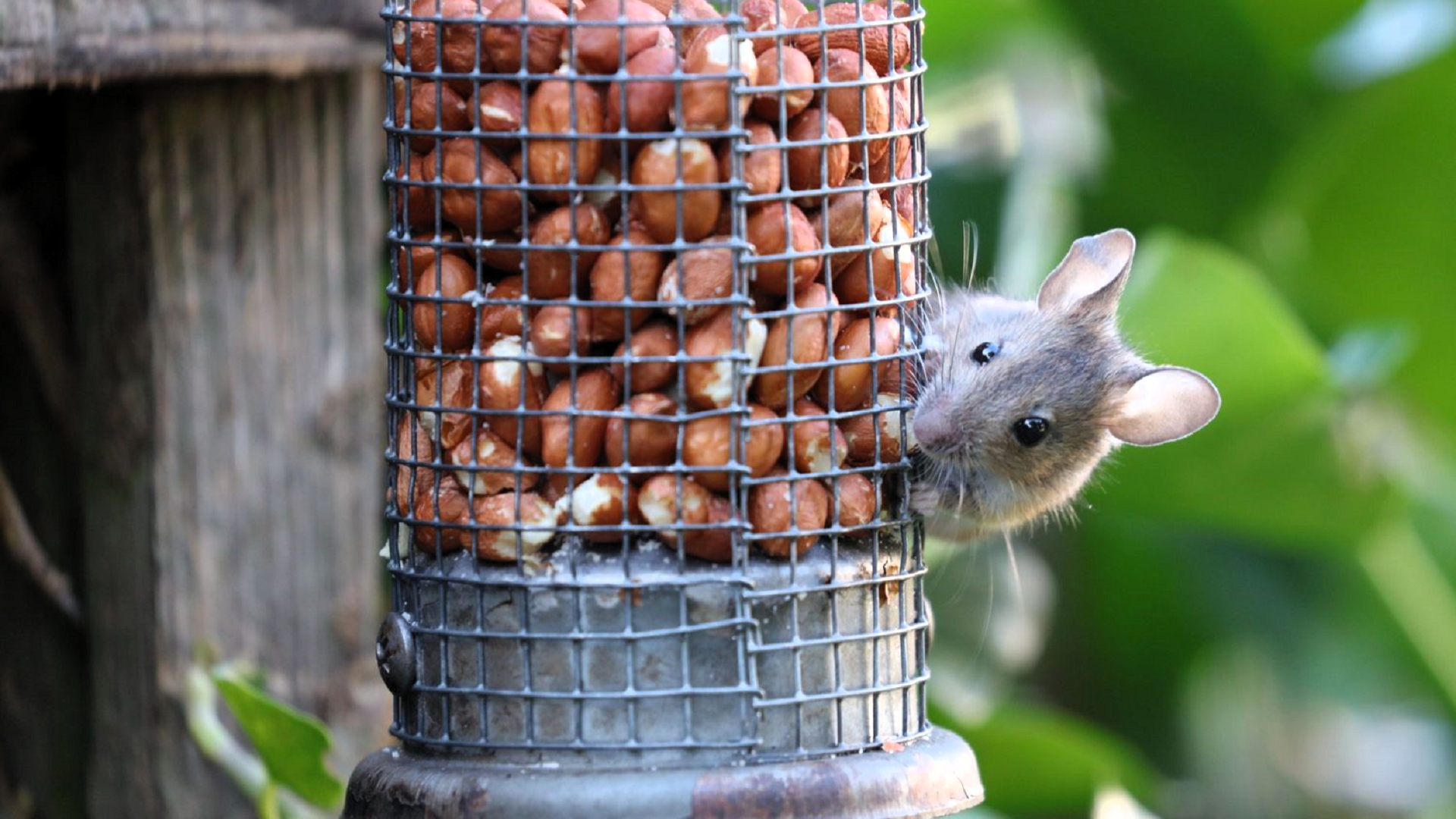
© Michael Trump TQ4491 20/06/2024
Apodemus sylvaticus
The Wood mouse is one of Britain's most abundant mammals, but being mainly nocturnal they often remain unseen. It has a dark-brown body that is greyish-white underneath. Prominent eyes and ears distinguish it from House mice that is a similar size. Wood Mice feed on a range of foods including seeds, buds, stems, fungi, moss, galls and nuts put out in bird feeders!
BLACK-TAILED SKIMMER
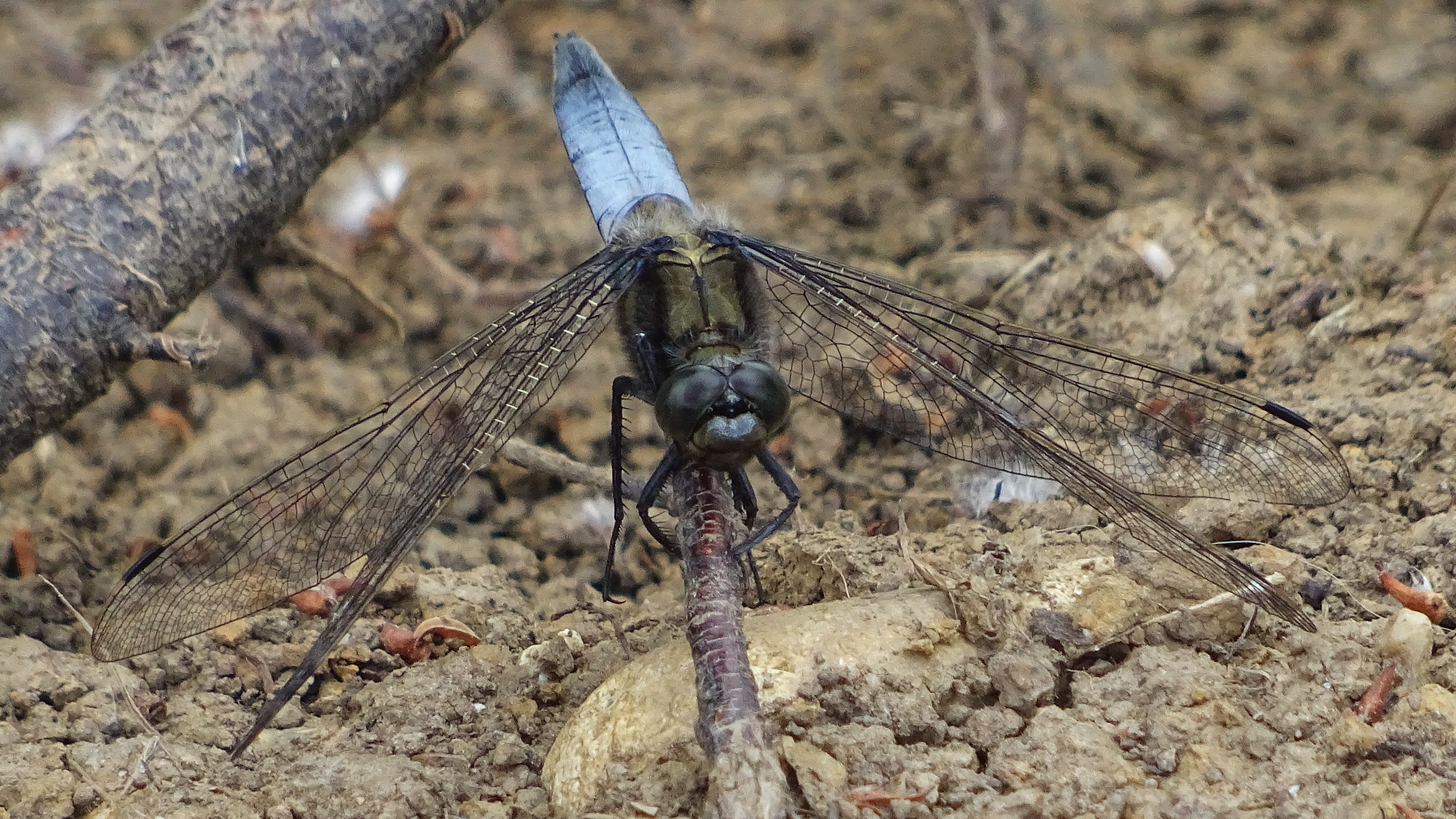
© Raymond Small
TQ4792 18/06/2024
Orthetrum cancellatum
This species of Dragonfly is on the wing from May to August. Mature males are blue, females and immatures are yellow.
BLACK-SPOTTED LONGHORN
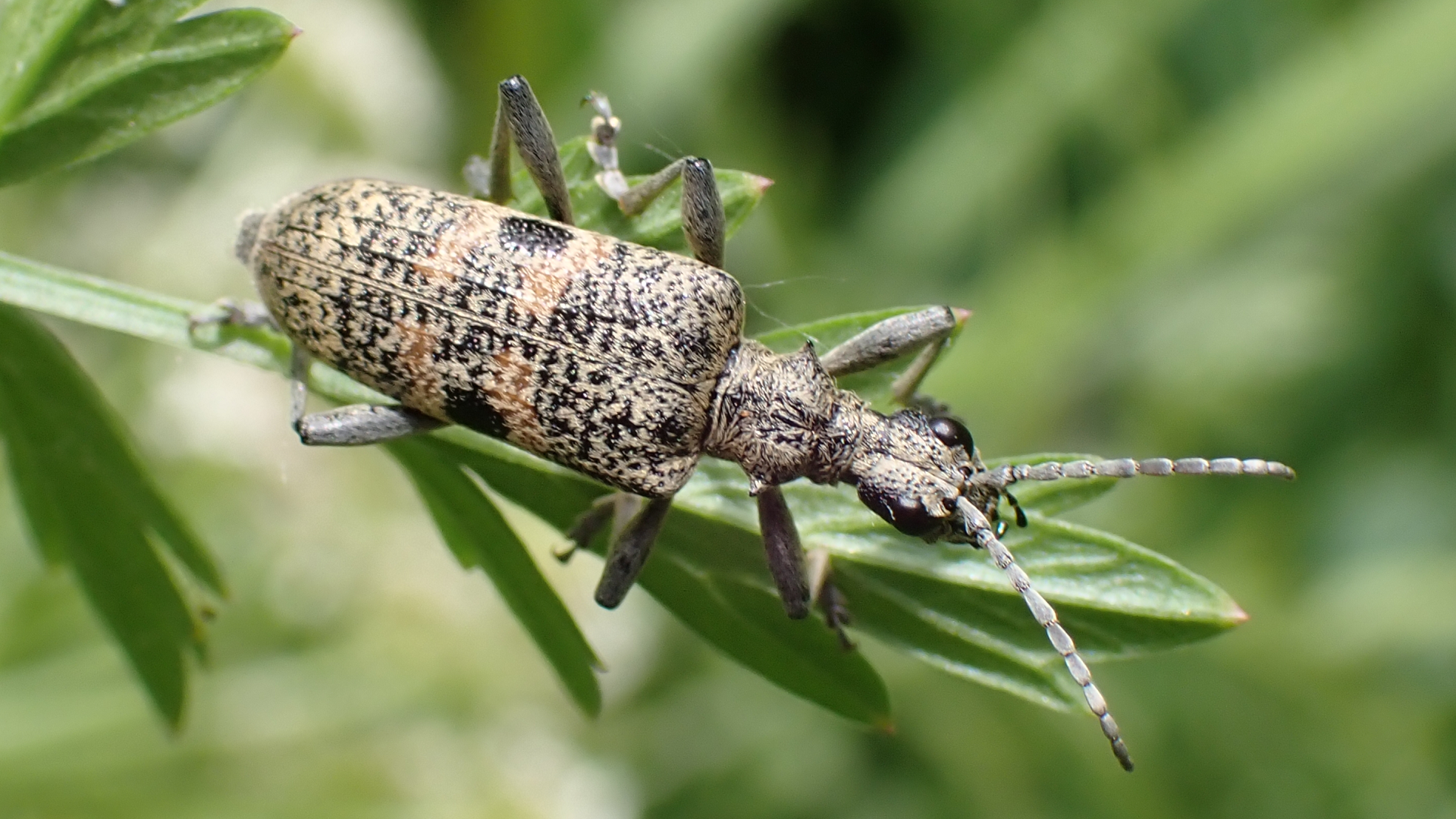
© Raymond Small TQ4792 04/06/2024
Rhagium mordax
Adults, 13-22mm long, are found from spring until autumn on umbellifers, hawthorn and elder in wooded locations. After mating the females oviposit eggs in cracks of tree bark usually where the wood is soft and starting to rot. The larvae make shallow galleries under the bark seldom entering the tissue that carries water and dissolved minerals upward through the tree. The young take 2-3 years to develop before reaching adulthood.
WASP BEETLE
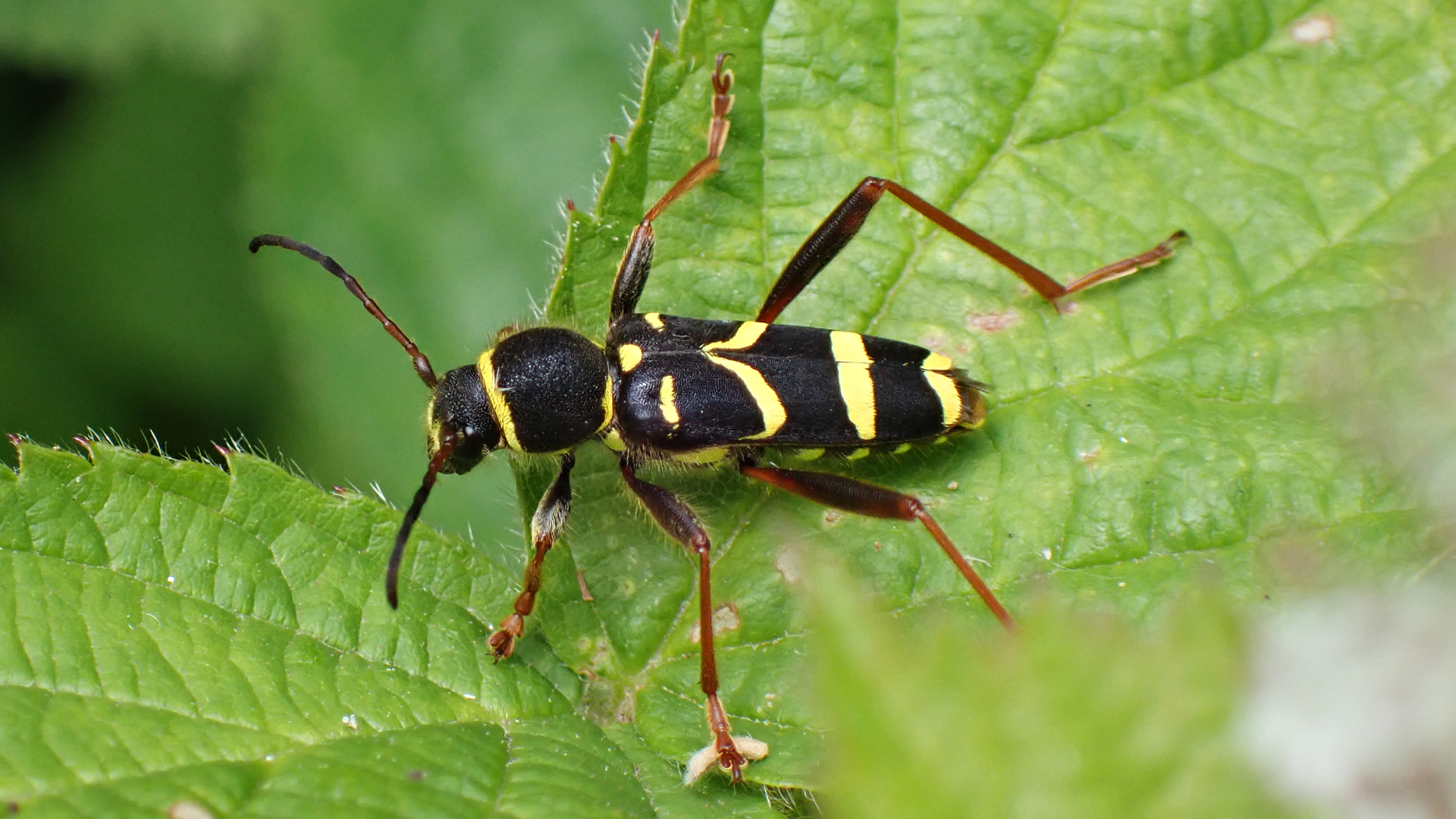
© Raymond Small TQ4793 07/06/2024
Clytus arietis
This Longhorn beetle uses mimicry to keep it safe from predators by making them think it is a common wasp. Apart from its black and yellow colouration the ruse is enhanced by using jerky movements when flying. This species can often be found resting on hedgerows during summer.
Its larvae live in warm, dry, dead wood, with a preference for willow and birch.
FAIRY-RING LONGHORN BEETLE
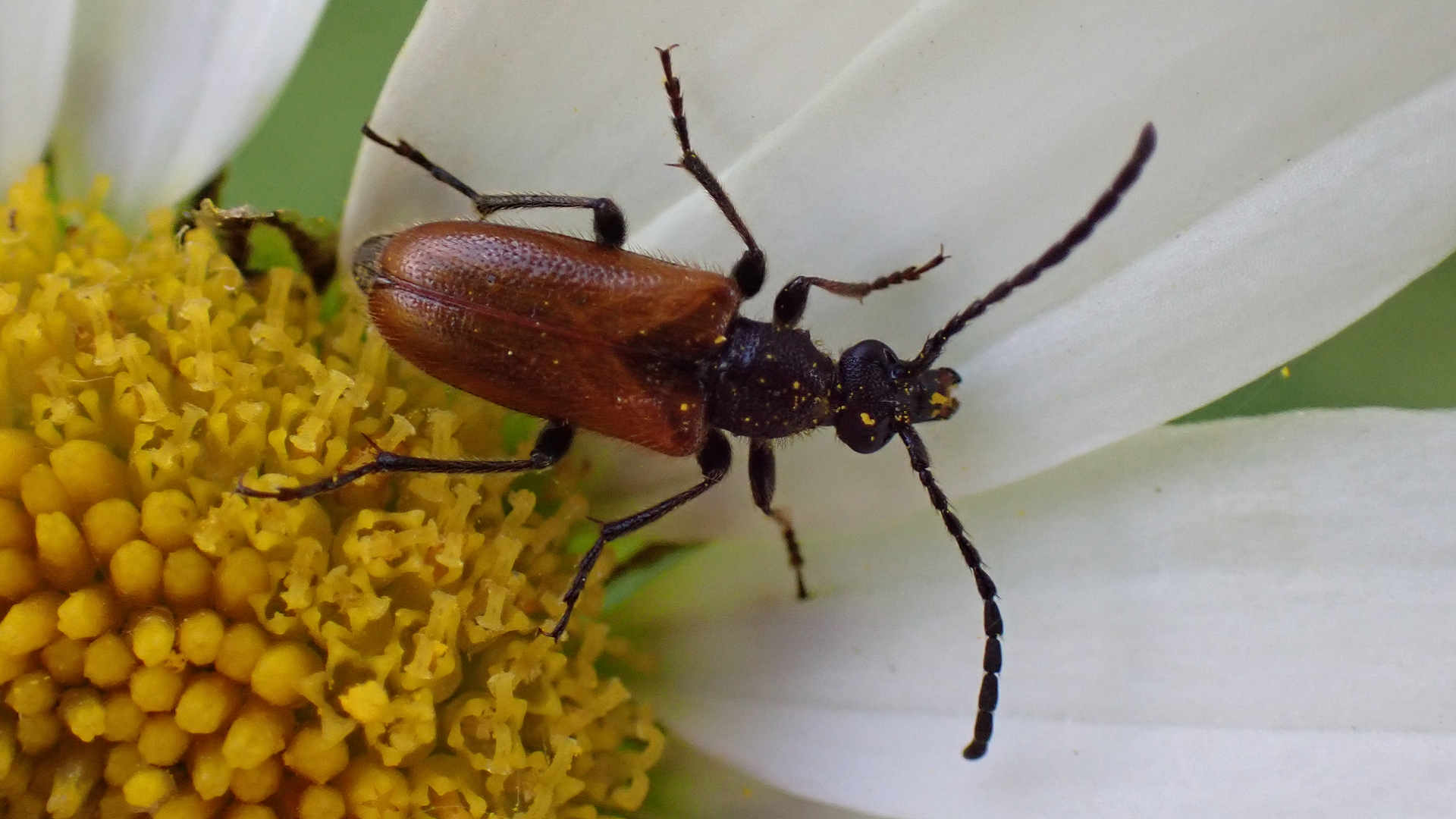
© Raymond Small TQ4792 17/06/2024
Pseudovadonia livida
The common name of this beetle is due to the females which lay eggs in humus rich soil where the Fairy-ring mushroom Marasmius oreades is present. Larvae normally take two years to develop. During autumn the larvae burrow down roughly 5cm into the soil where they overwinter to resume feeding in spring. Adults visit flower-heads of a range of plants including ox-eye daisies, buttercups, umbels and yarrow to feed on pollen and nectar. Adults are 5-9mm in length.
WOUNDWORT SHIELDBUG
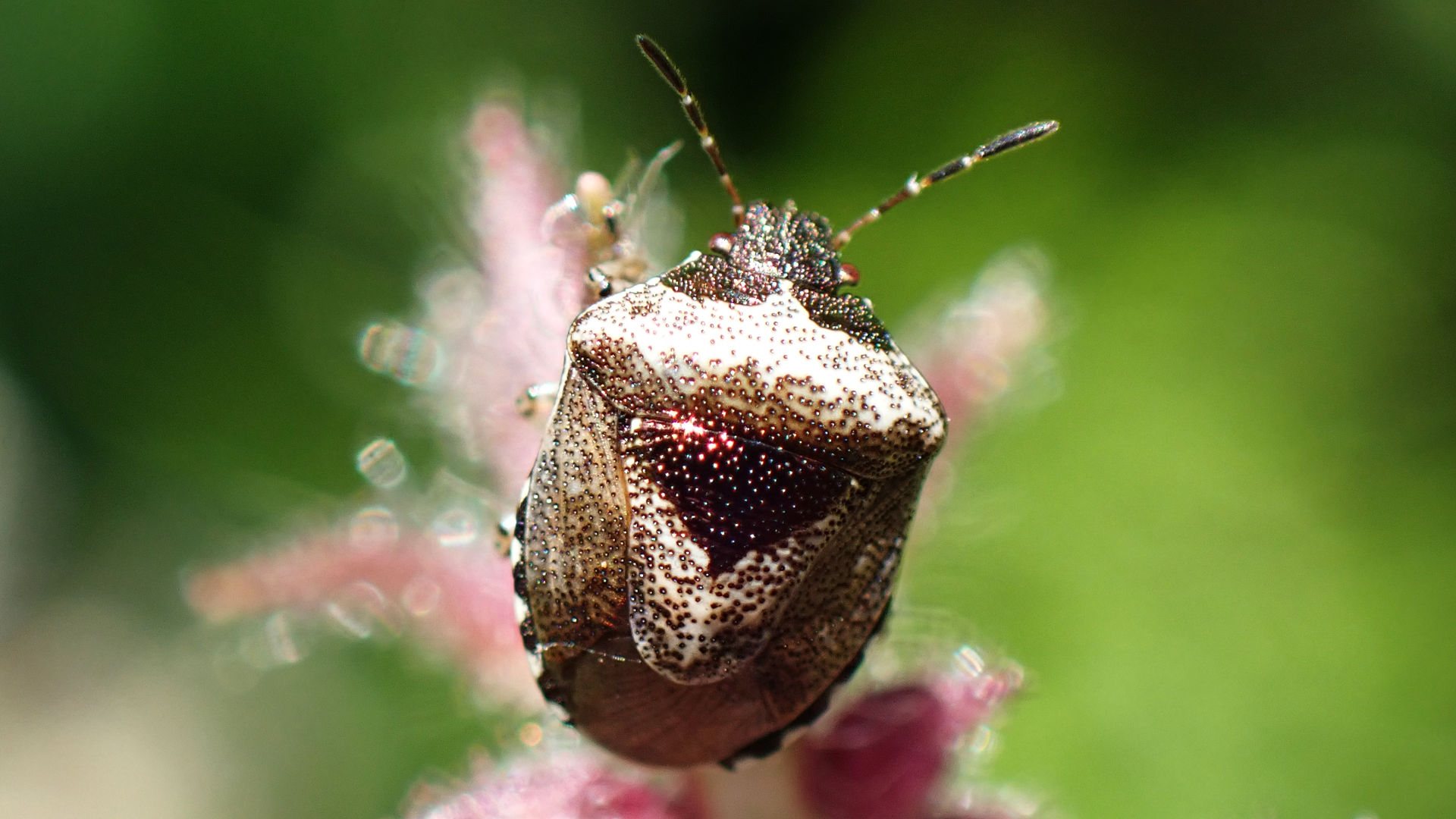
© Raymond Small
TQ4793 17/06/2024
Eysarcoris venustissimus
This small greyish-bronze species, 5-7mm in length, is found on hedge woundwort and occasionally black horehound and nettles. The head, front of the pronotum and scutellum are copper coloured, while the connexivum is decorated with black and white.
SPOTTED LACEHOPPER
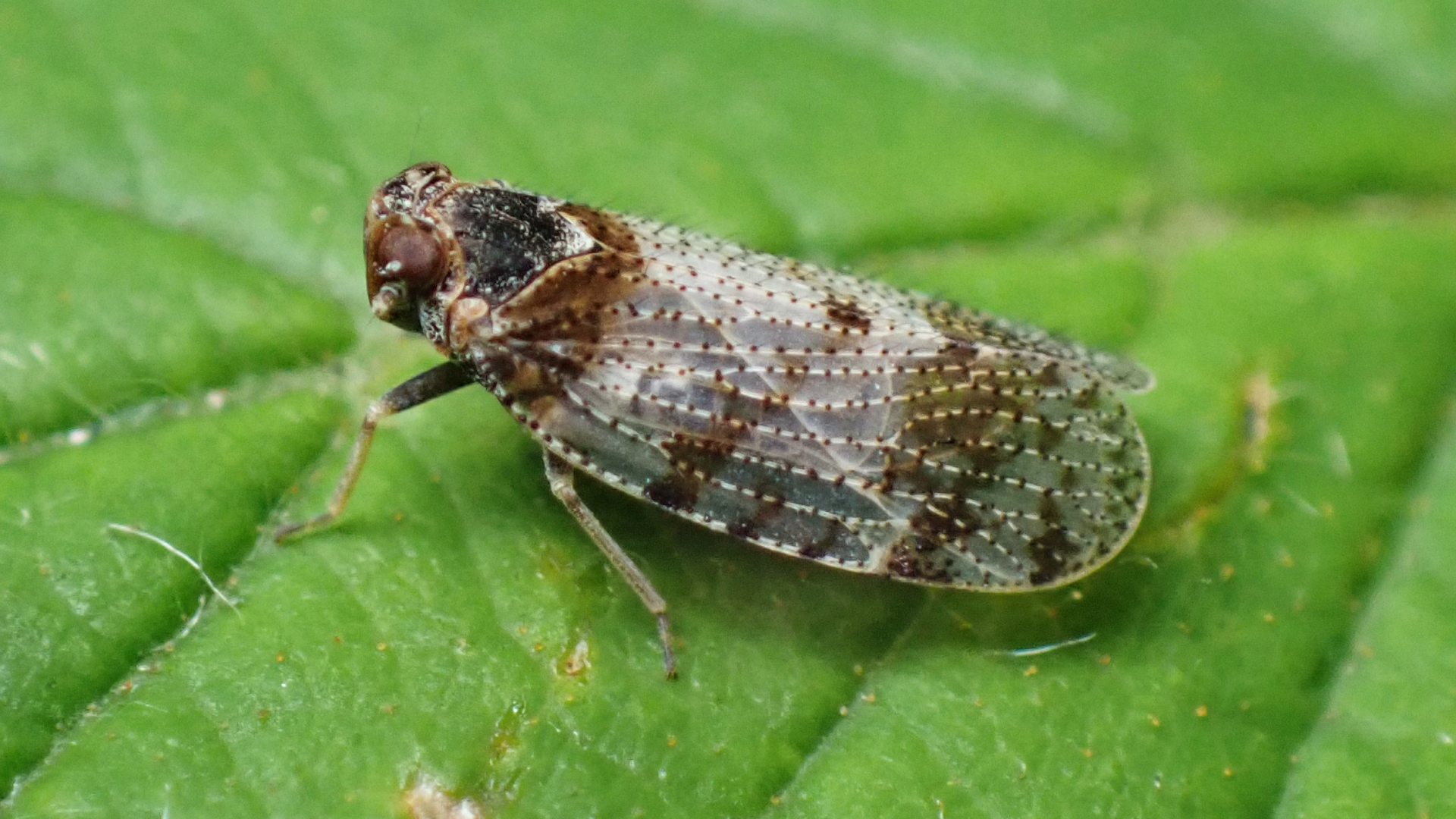
© Raymond Small TQ4793 10/06/2024
Tachycixius pilosus
This Lacehopper is found on deciduous trees and shrubs from May until July. It is about 5mm in length, has three keels on the scutellum and dark spots between the veins at the apex of the forewing. There are also usually three short dark stripes along the forewing edge. The forewings range from being fairly plain to nearly totally dark. Its larvae feed at the base of various grasses.
COMMON FROGHOPPER
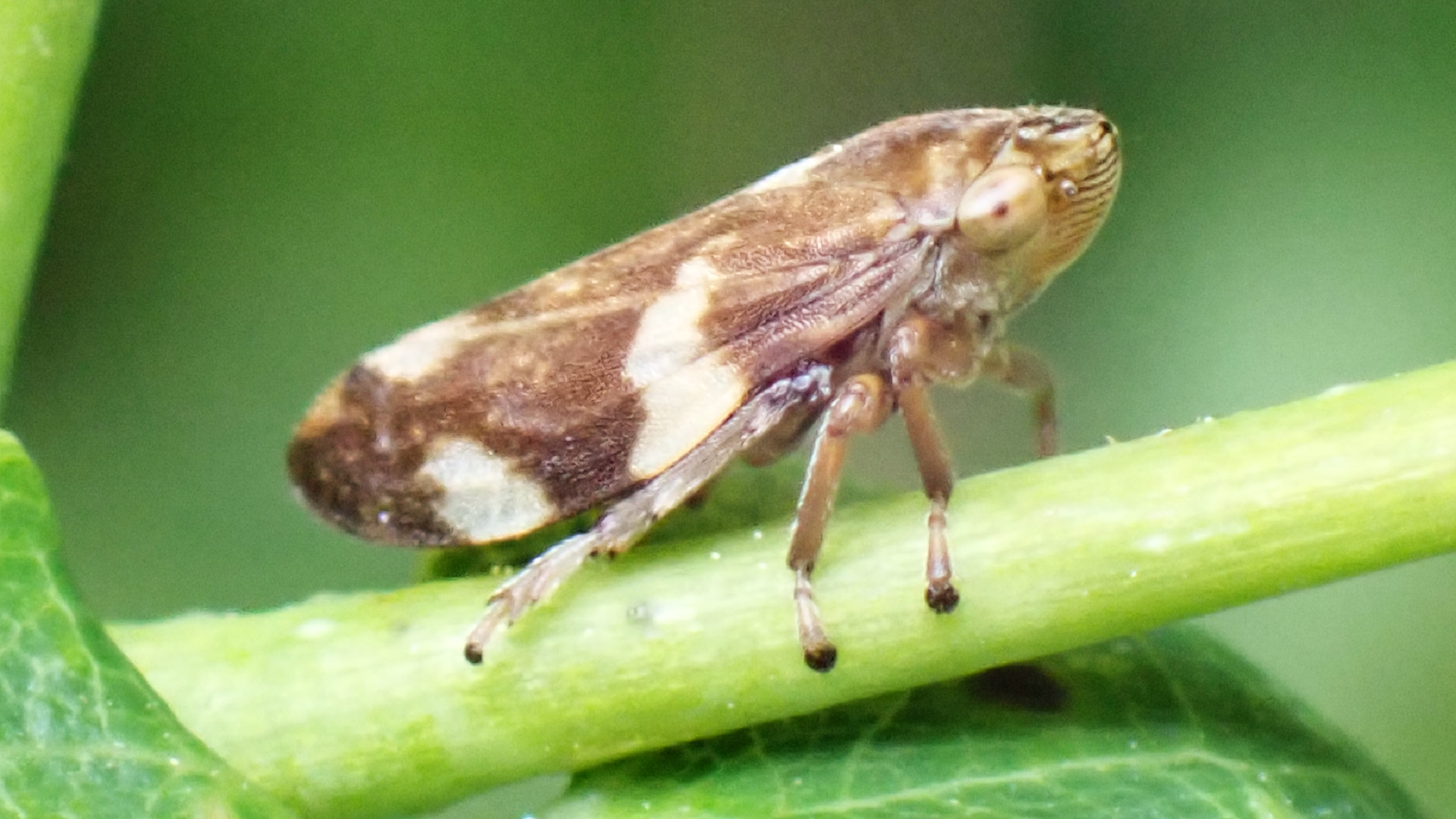
© Raymond Small TQ4793 10/06/2024
Philaenus spumarius
This bug is very common on a large range of plants and comes in a variety of markings and colour forms. The larvae produce the 'cuckoo-spit' often seen on vegetation during spring. Length: 5-7mm.
WATER BOATMAN
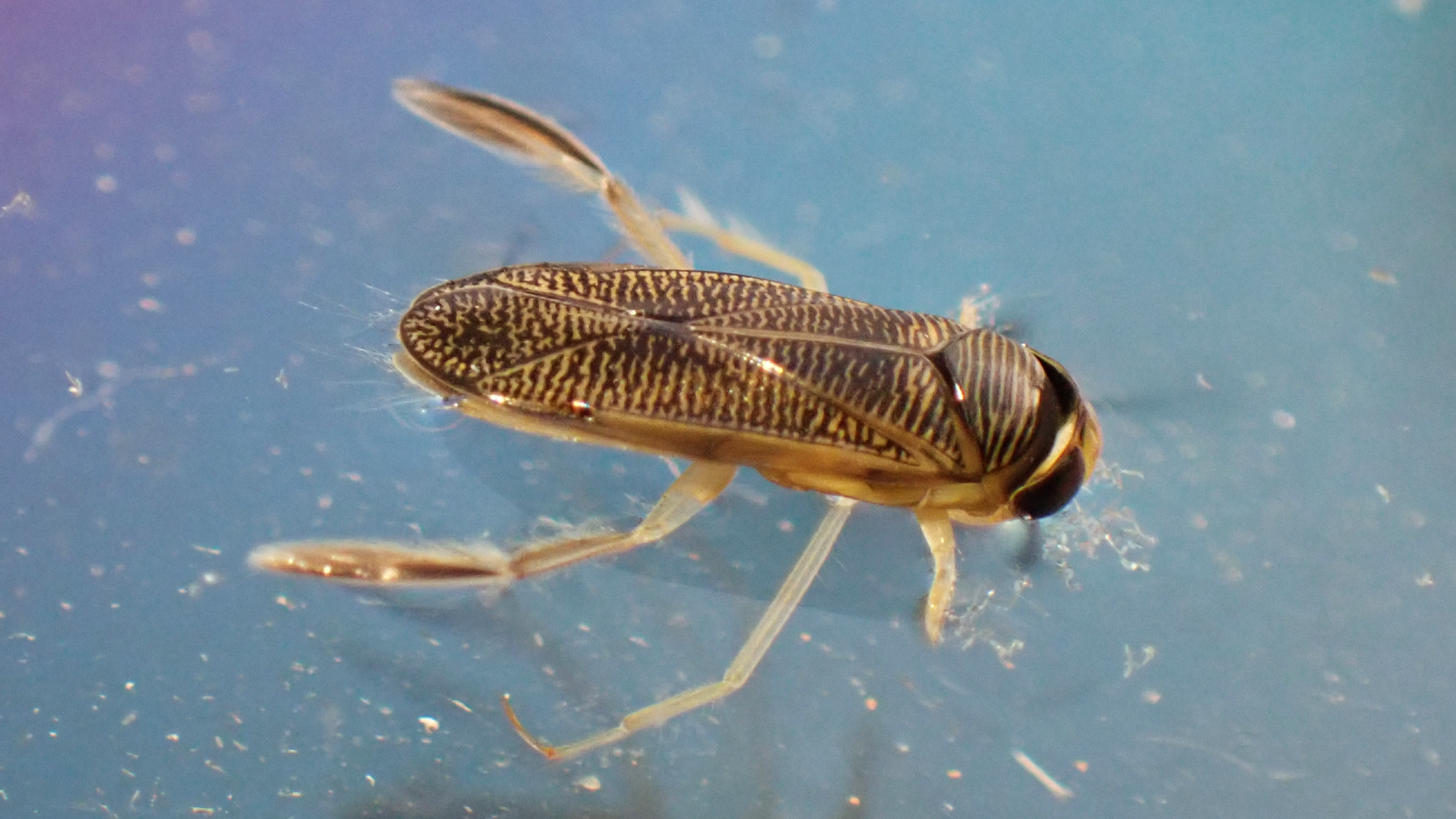
© Raymond Small TQ4692 23/06/2024
Corixidae
Water boatmen belong to a family of aquatic bugs containing around 500 species worldwide. They tend to have four long rear legs and two short front ones. The forelegs are covered with hairs and shaped like oars. These bugs can fly. This particular specimen was attracted to ultraviolet light being emitted from a moth trap. It was placed in a petri dish containing water to show it swimming right side up. There is another group of insects known as 'Lesser water boatmen' or 'Backswimmers' that usually swim upside down and tend to spend less time at the surface. Water boatman have long spiked mouthparts for puncturing and sucking prey. Their bite is venomous and they have no hesitation in using that spike and venom if handled. I was once pond dipping with a friend and warned him about the bite just as (right on cue) he was bitten. The pain was still being mentioned two days later!
TRIVIAL PLANT BUG
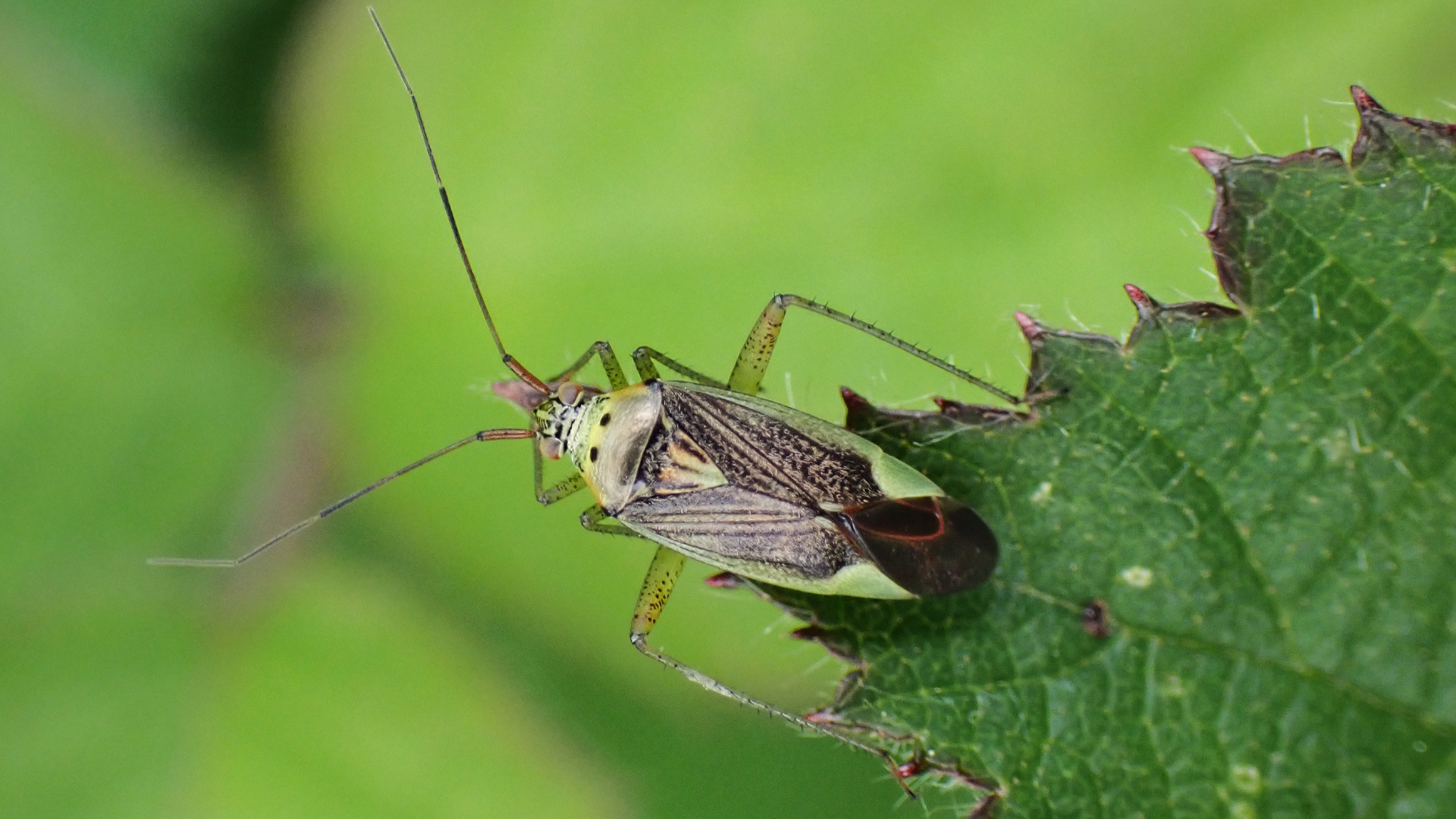
© Raymond Small TQ4793 01/06/2024 female
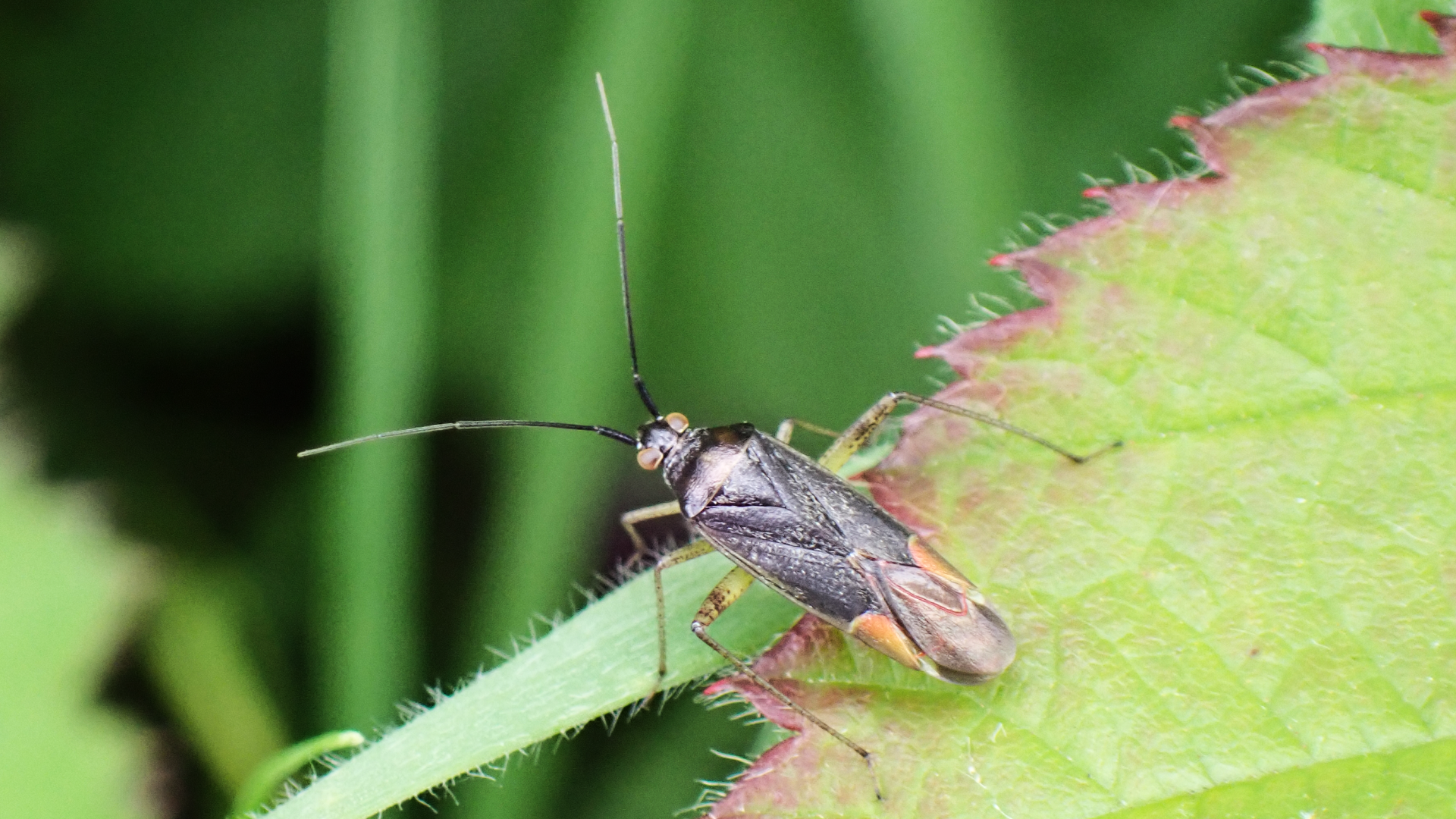
© Raymond Small TQ4793 01/06/2024 male
Closterotomus trivialis
This mirid bug originates from the Mediterranean and the first reported sighting in London occurred in 2009. It is now very common in Hainault Forest. They vary a bit in appearance but females are normally greenish, while males are usually dark with a red wedge-shaped section of the forewing (cuneus). The female's pronotum is usually marked with two dark spots in the centre and dark markings at the hind corners. Adults measure up to 7.5mm in length.
WHITE DEATH SPIDER
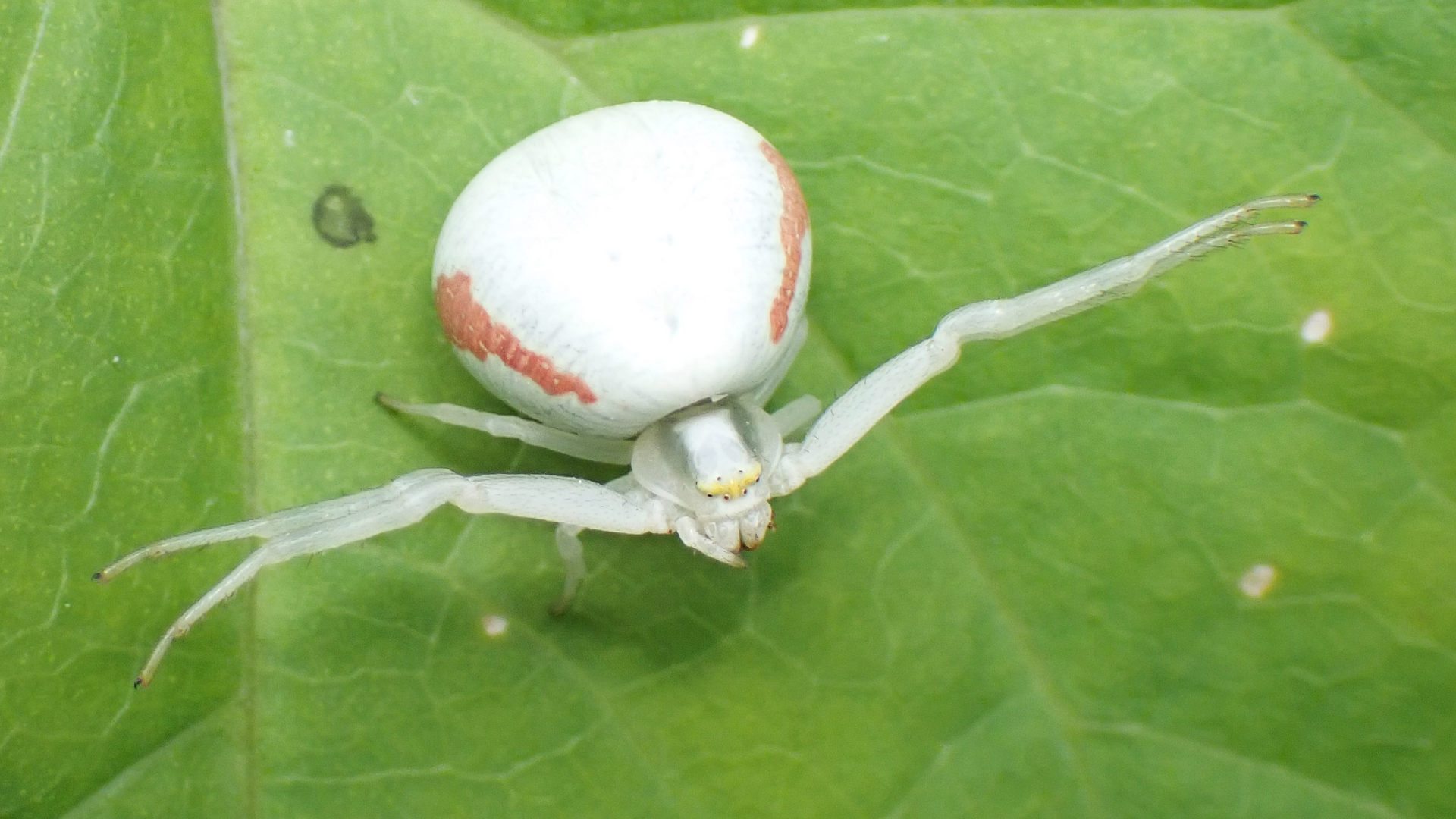
© Raymond Small TQ4793 10/06/2024
Misumena vatia
This spider is frequently found on flower-heads during summer with front legs apart ready to ambush a passing victim. The spider grabs victims and subdues them with venom; it does not spin webs to catch prey. Mature females have the ability to change colour from white to yellow allowing them to blend in with surroundings.
LARGE SKIPPER

© Raymond Small TQ4792 06/06/2024
Ochlodes sylvanus
Large Skippers are usually found in grassy locations. Males often perch on bramble in sunny locations waiting for passing females. Males have a thick black line through the middle of the fore-wing. A distinctive faint chequered pattern can be seen on the wing sides.
SILVER-GROUND CARPET
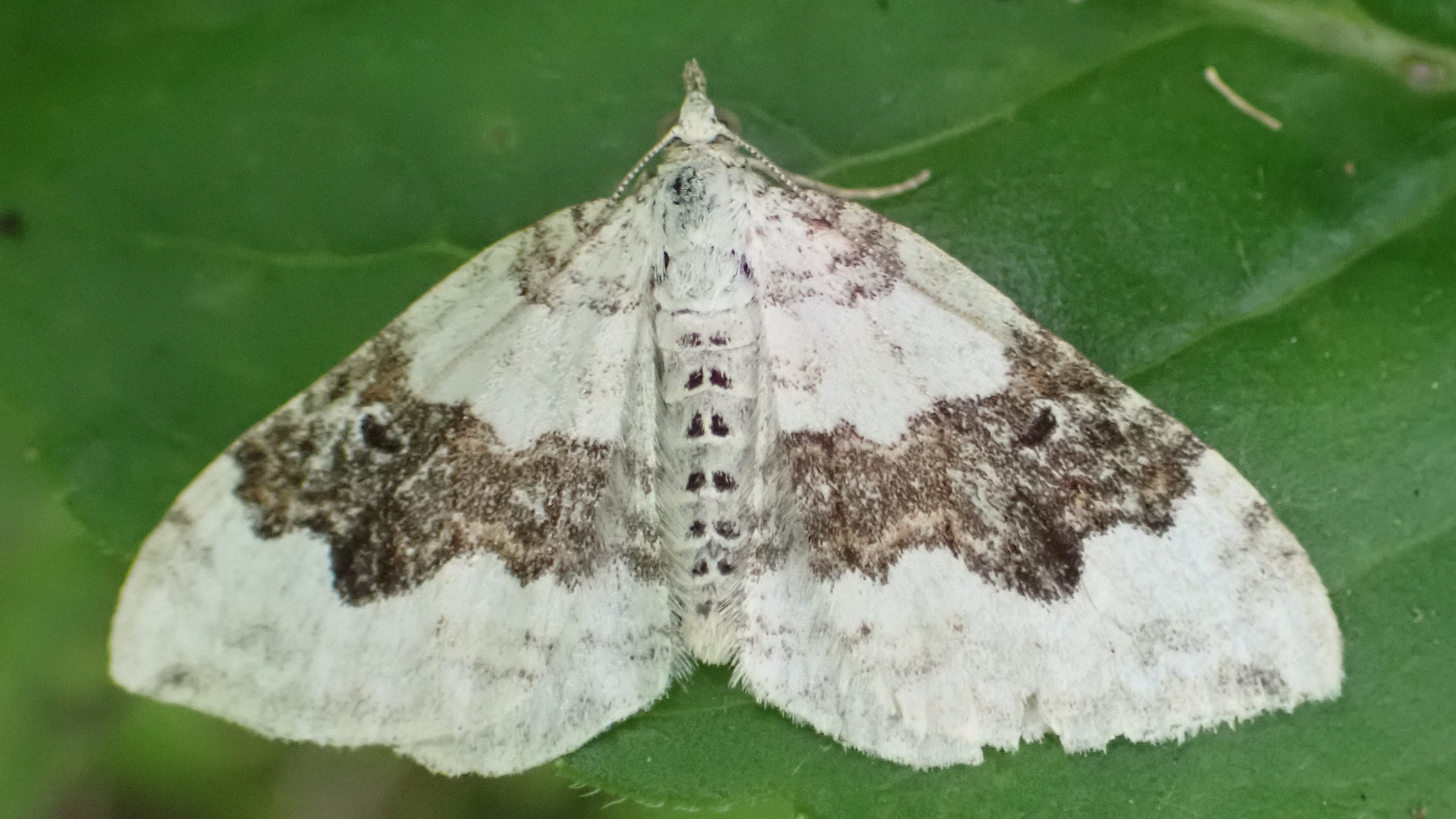
© Raymond Small TQ4793 06/06/2024
Xanthorhoe montanata
A species that can be rather variable, but all forms have a distinctive whitish ground colour. The central band can vary a lot. This moth visits herbaceous plants from May to July.
COMMON MARBLED CARPET
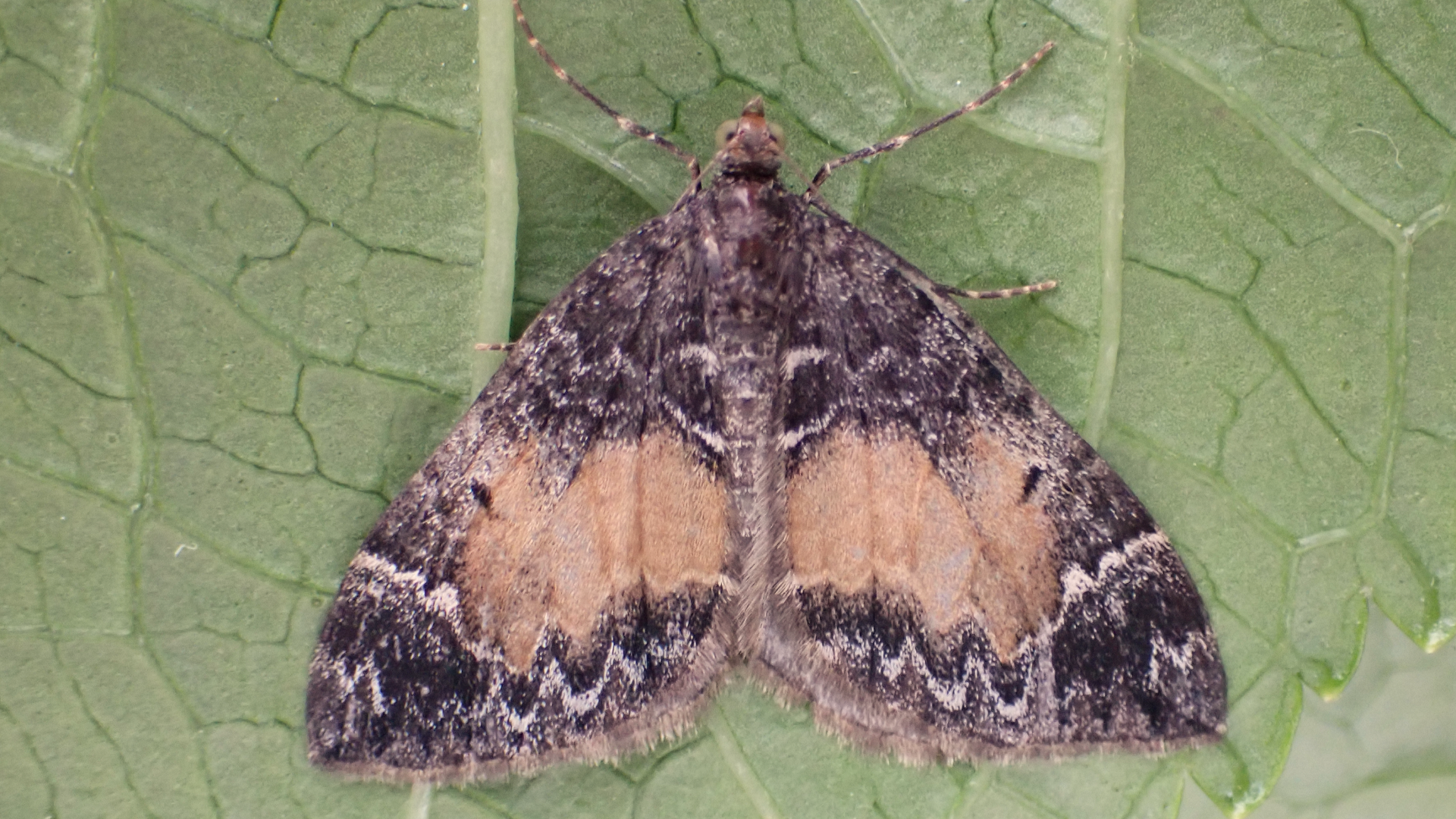
© Raymond Small TQ4692 02/06/2024
Dysstroma truncata
A widespread and common species that comes in a range of colour patterns. Its larvae feed on woody plants. There are two generations, one appears in May and June, and the other from August to October.
YELLOW SHELL
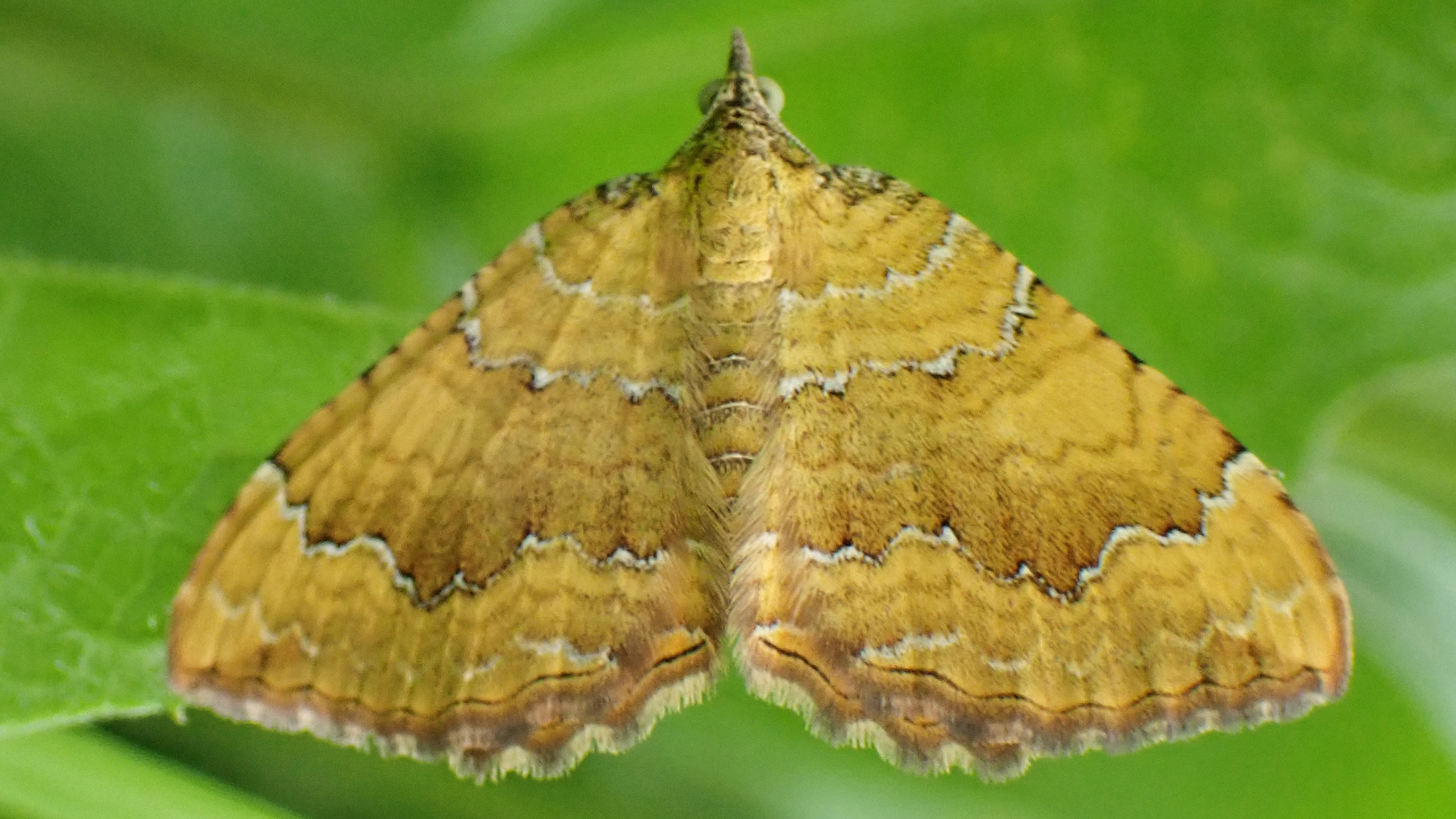
© Raymond Small TQ4792 07/06/2024
Camptogramma bilineata
The Yellow Shell is a day-flying moth on the wing from June until August. Colouration and patterning is very variable. Its larvae feed on cleavers and bedstraws.
MOTHER SHIPTON
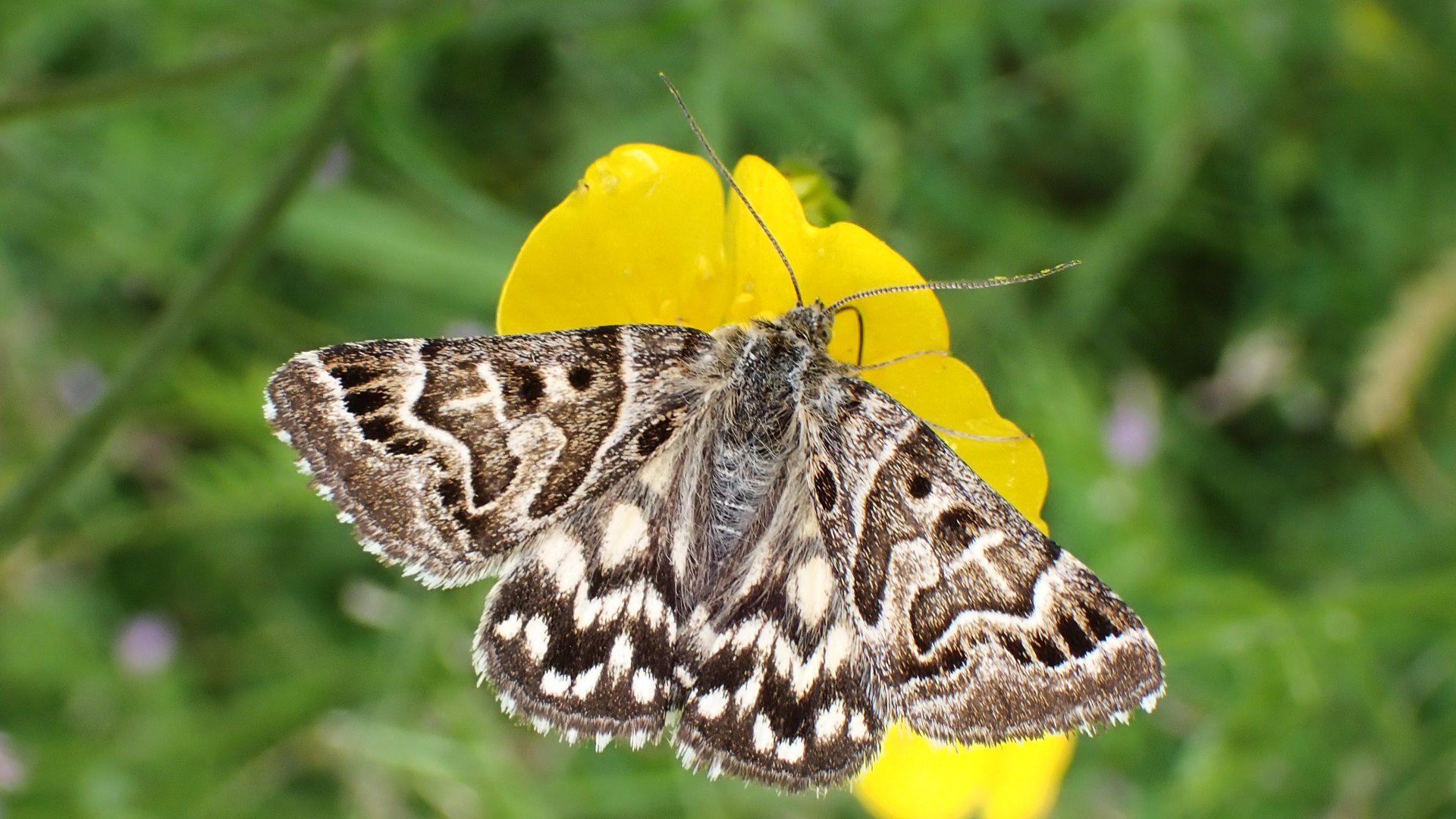
© Raymond Small TQ4792 04/06/2024
Callistege mi
This day-flying moth visits meadow flowers during sunny spells. Its name is a reference to 'Old Mother Shipton', the 16th Century witch whose face can be seen on the wings.
WHITE ERMINE
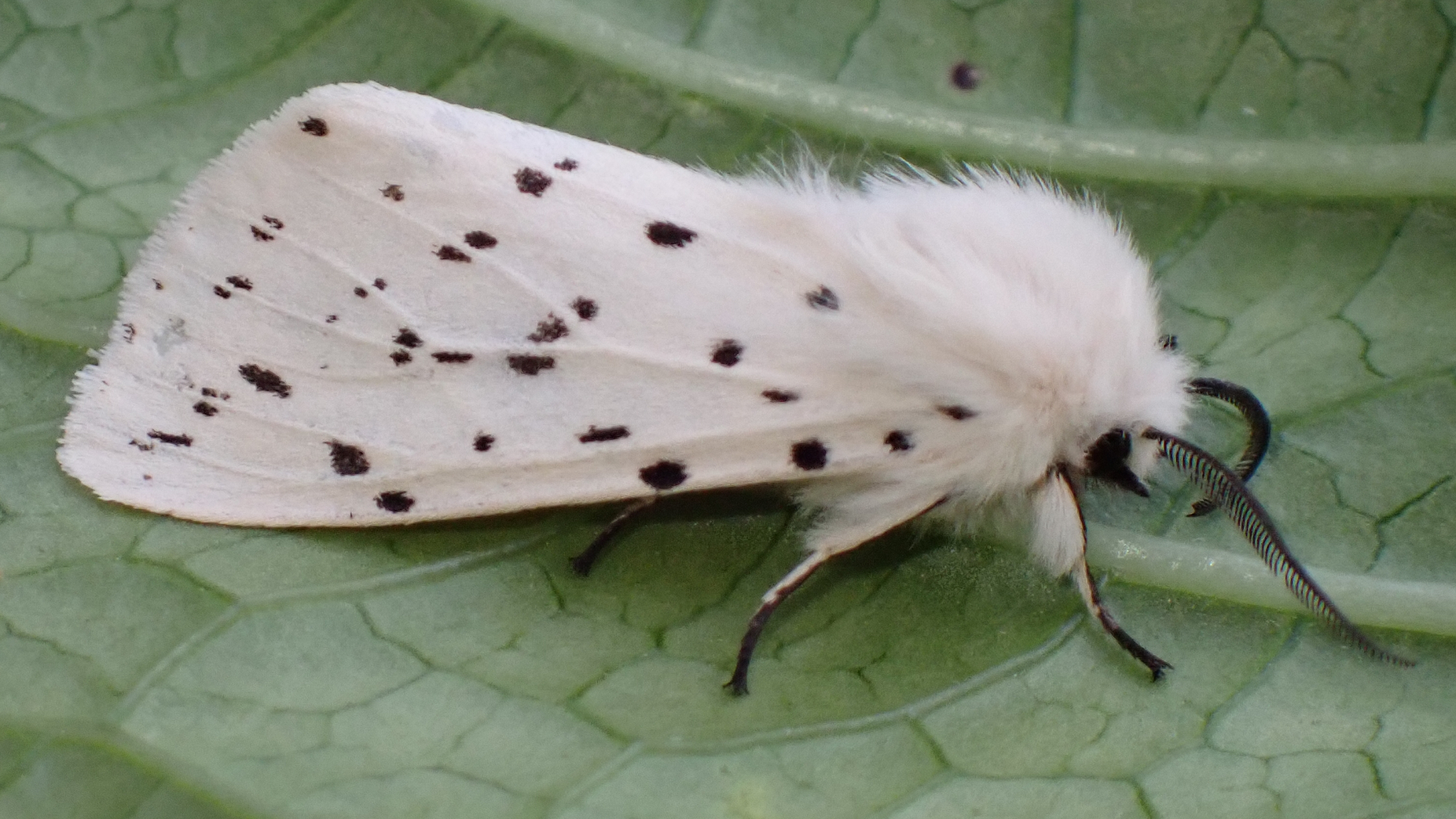
© Raymond Small TQ4692 02/06/2024
Spilosoma lubricipeda
The White ermine flies from May to July. Its larvae feed on Nettles and Dock.
LARGE YELLOW UNDERWING
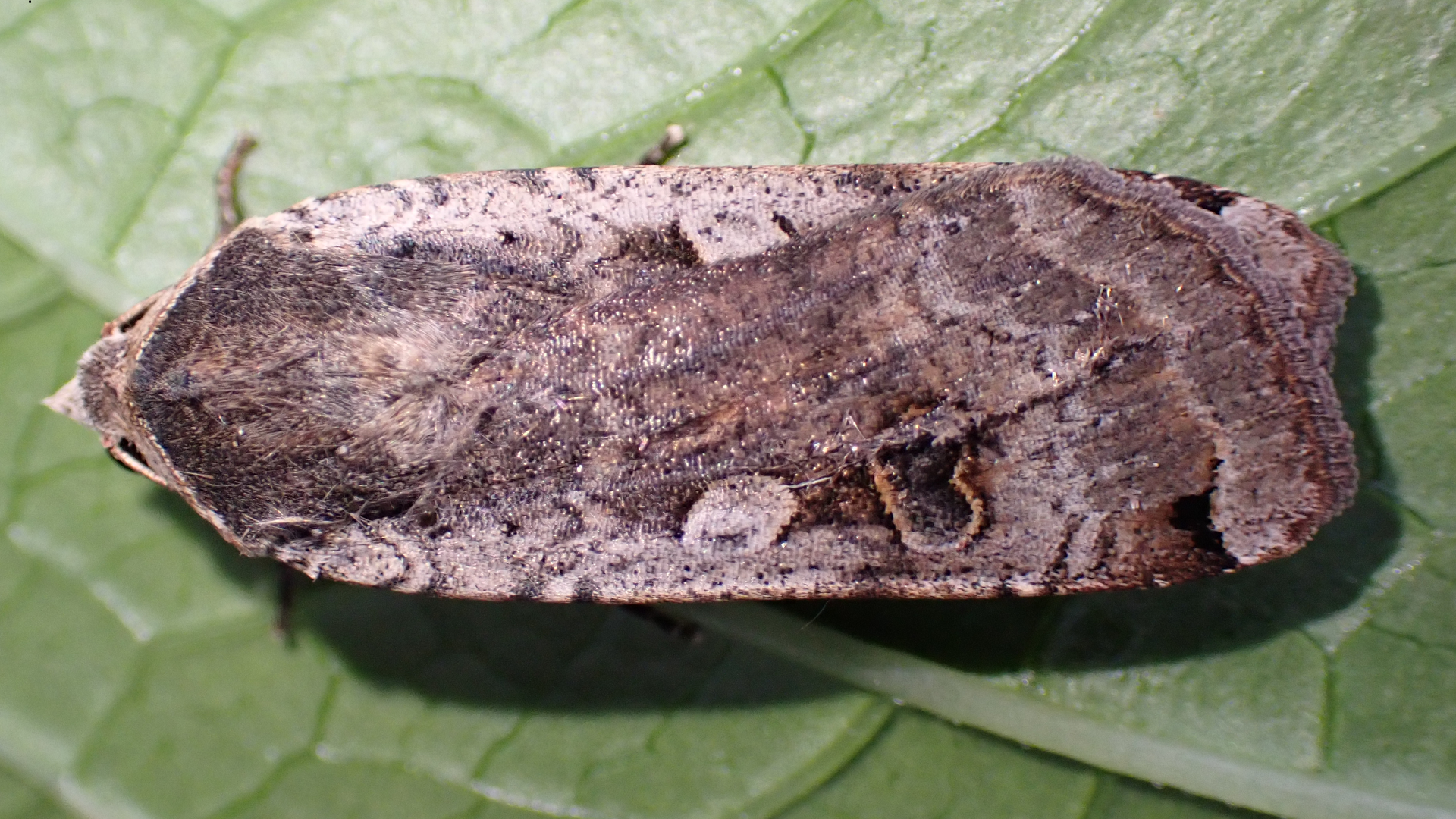
© Raymond Small
TQ4692 02/06/2024
Noctua pronuba
This common species flies from June to November. When at rest the bright yellow underwings are usually hidden. The larvae feed on herbaceous plants and grasses.
BRAMBLE SHOOT MOTH
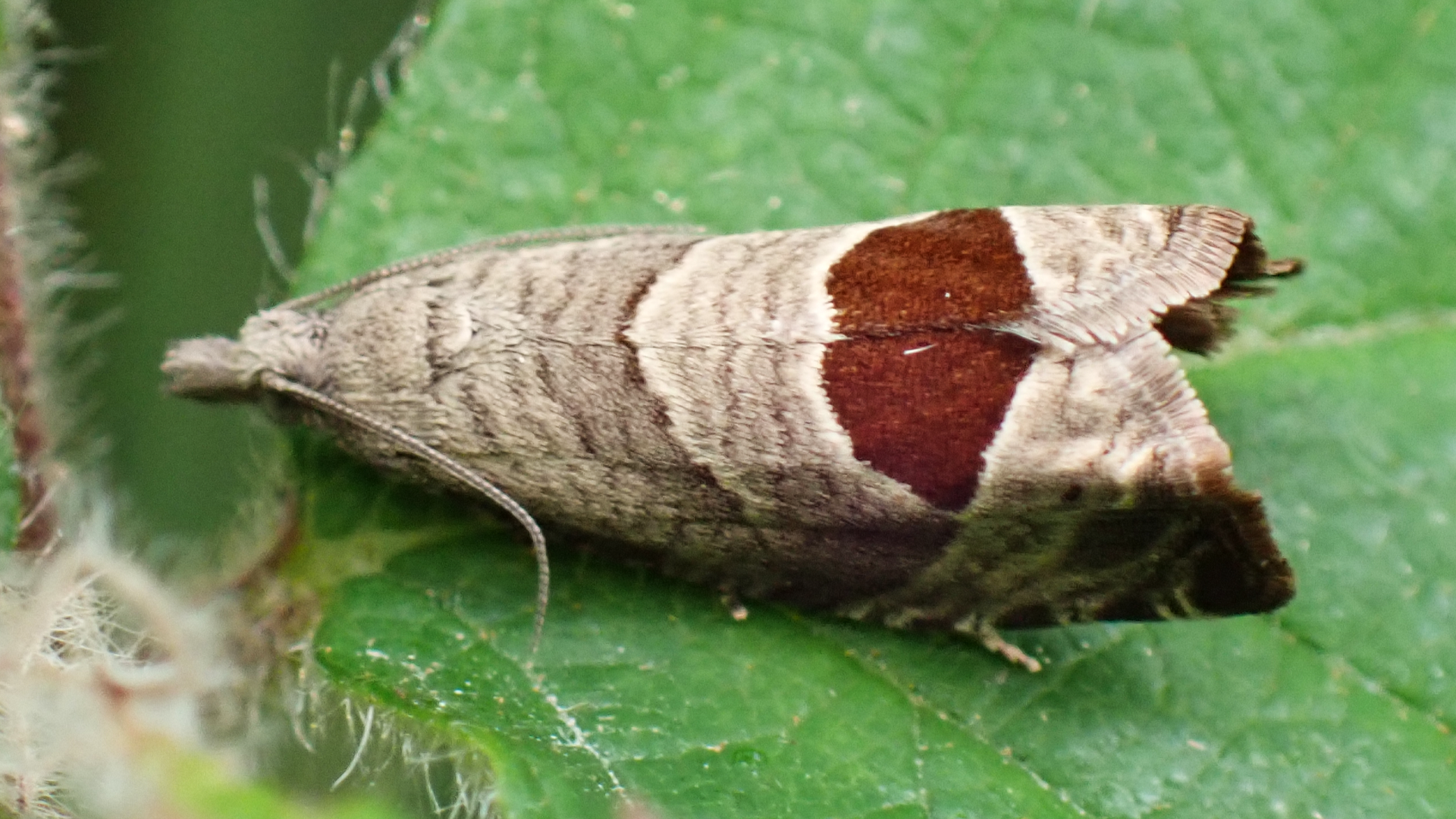
© Raymond Small
TQ4793 06/06/2024
Notocelia uddmanniana
This species was previously known as the 'Bramble shoot', but has recently had its name changed to the 'Bramble shoot moth'. It flies in June and July and is common in woodland and on hedgerows where bramble exists which is the larval foodplant. The large reddish-brown or chocolate-brown marking on the wings makes this a fairly easy species to identify.
YELLOW OAK TORTRIX
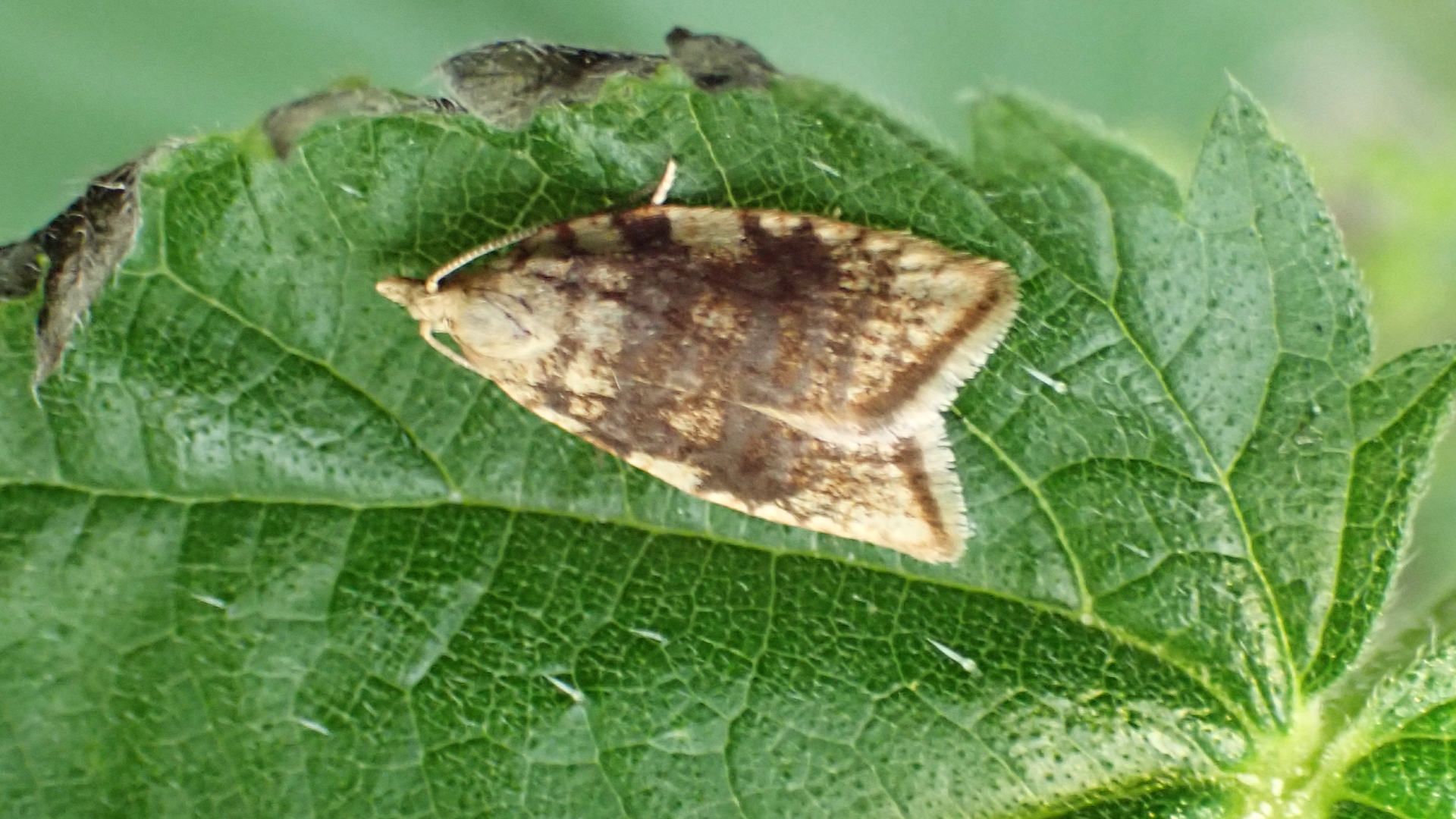
© Raymond Small
TQ4793 12/06/2024
Aleimma loeflingiana
This is a woodland micro-moth that flies from June until August. Its larvae feed on oak. It was originally known as the 'Yellow oak button'.
BEE MOTH
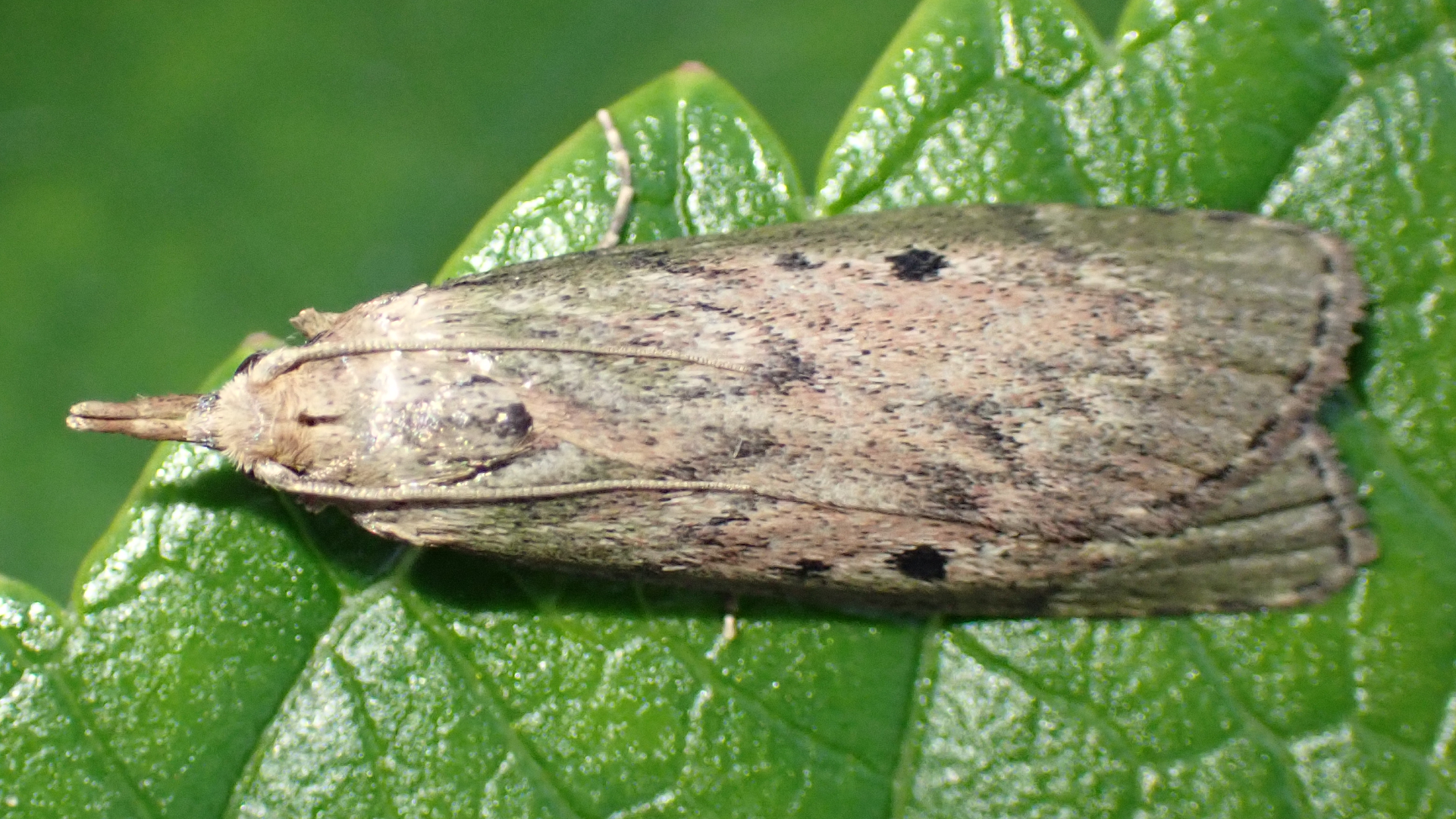
© Raymond Small TQ4692 02/06/2024
Aphomia sociella
The Bee Moth is a fairly common species that flies from May to August. Males are more brightly coloured and patterned than the females. The larvae feed on comb inside bee and wasp nests.
PINE BARK MOTH
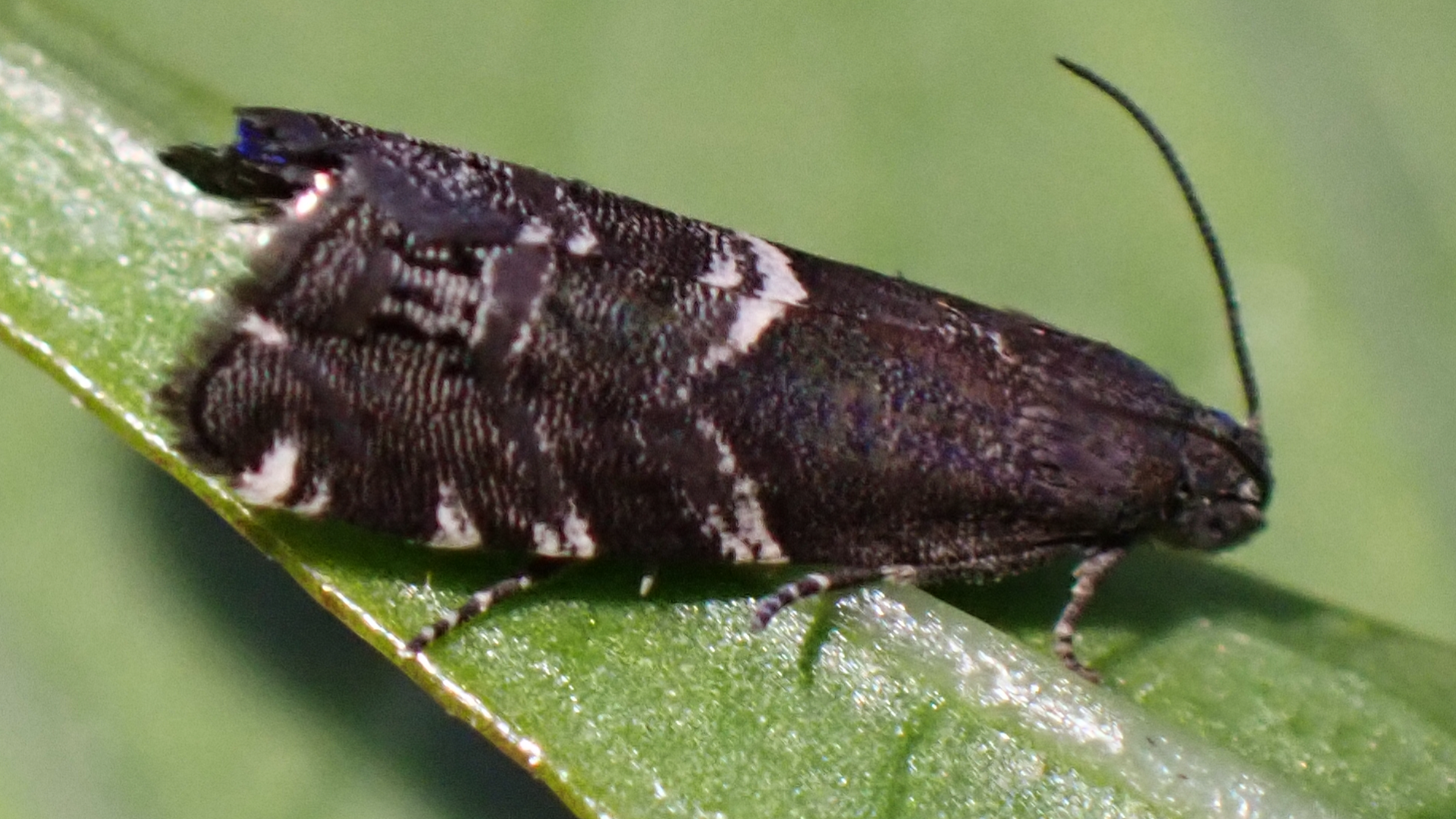
© Raymond Small TQ4692 23/06/2024
Cydia coniferana
This species is listed as nationally scarce and there are not many records in Essex. It flies around conifers during afternoon sunshine and at dusk from May until August. The larvae live in a silk-lined tunnel under pine bark. Previously known as the Pine-bark piercer.
SIX-SPOT BURNET
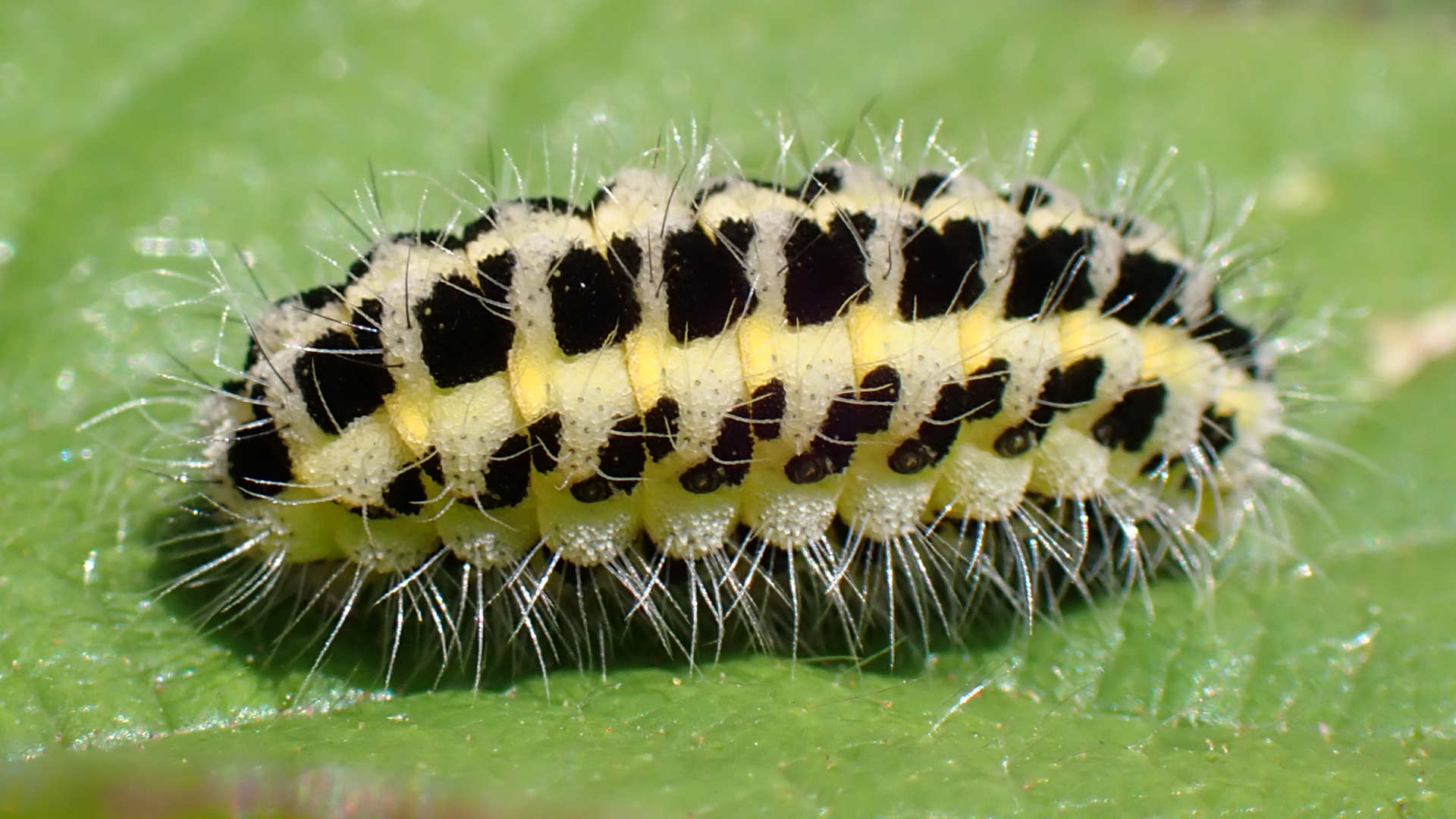
© Raymond Small TQ4792 06/06/2024
Zygaena filipendulae
SIx-spot burnet moth larvae feed on bird's-foot-trefoil.
WHITE PLUME
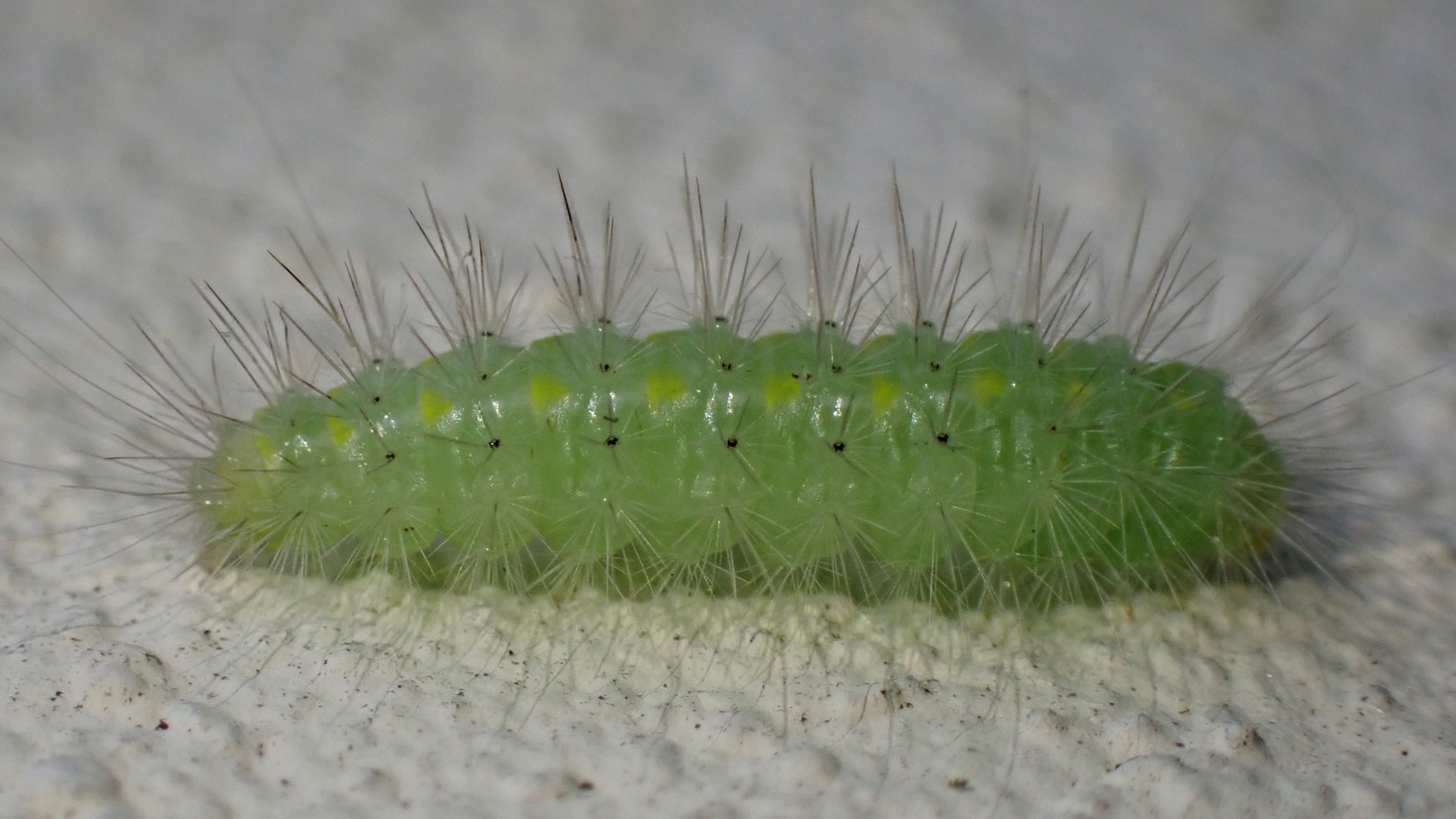
© Raymond Small TQ4692 04/06/2024
Pterophorus pentadactyla
White plume moth larvae feed on bindweed.
WATER-DROPWORT BROWN
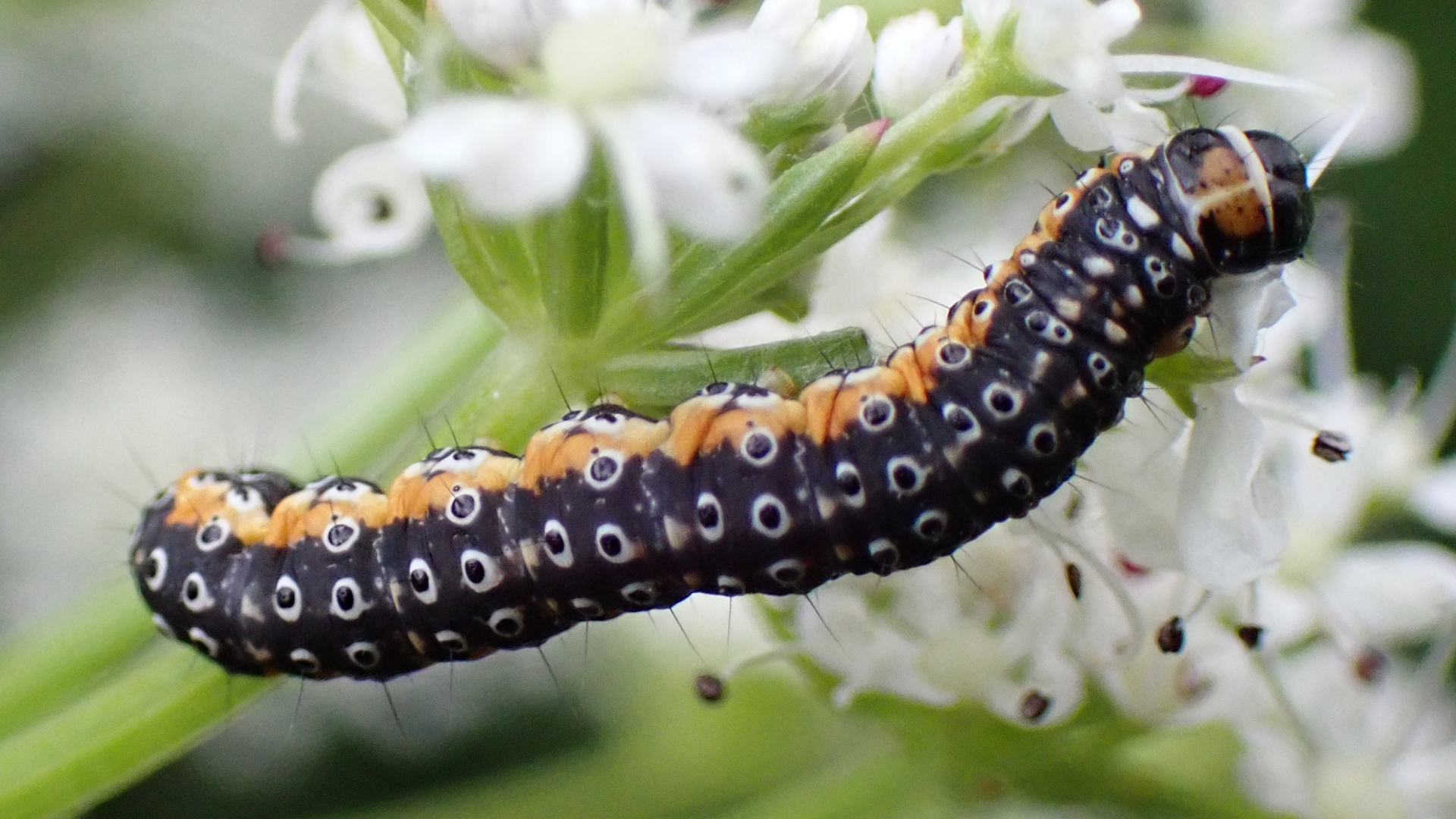
© Raymond Small TQ4793 11/06/2024
Depressaria daucella
The Water-dropwort brown is a rather plain moth. Its much more attractive larvae feed on flowers and seeds of Hemlock water-dropwort, a highly poisonous plant (to humans) that grows by Hainault Lake. The larvae stitch florets of the umbellifer together with tough silken threads to form a hidden tunnel. They burrow into the stem usually close to a joint and then pop out throughout the day during sunshine. This species was formerly known as the Dingy flat-body.
BROWN OAK TORTRIX
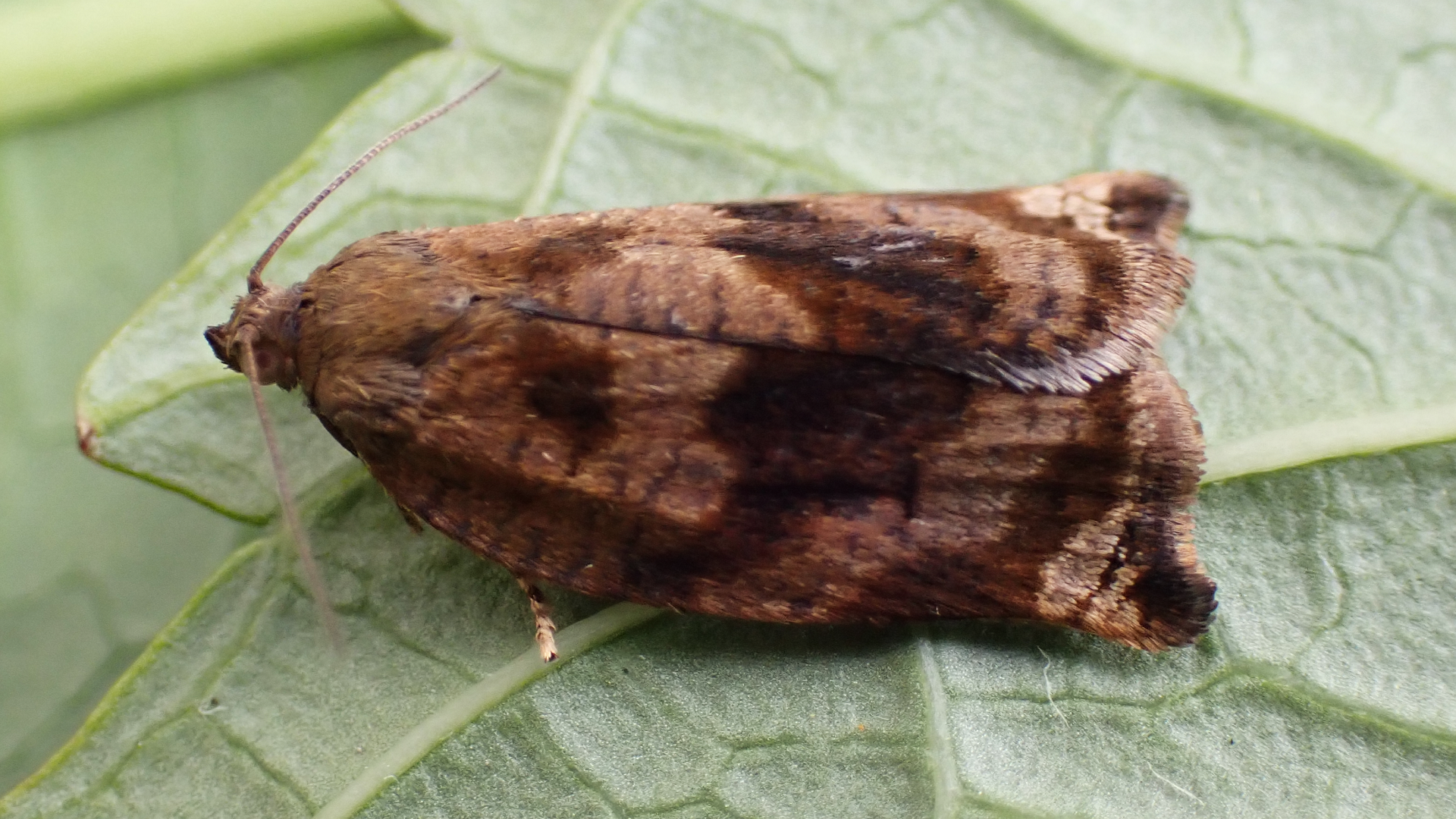
© Raymond Small TQ4692 09/06/2024 Female
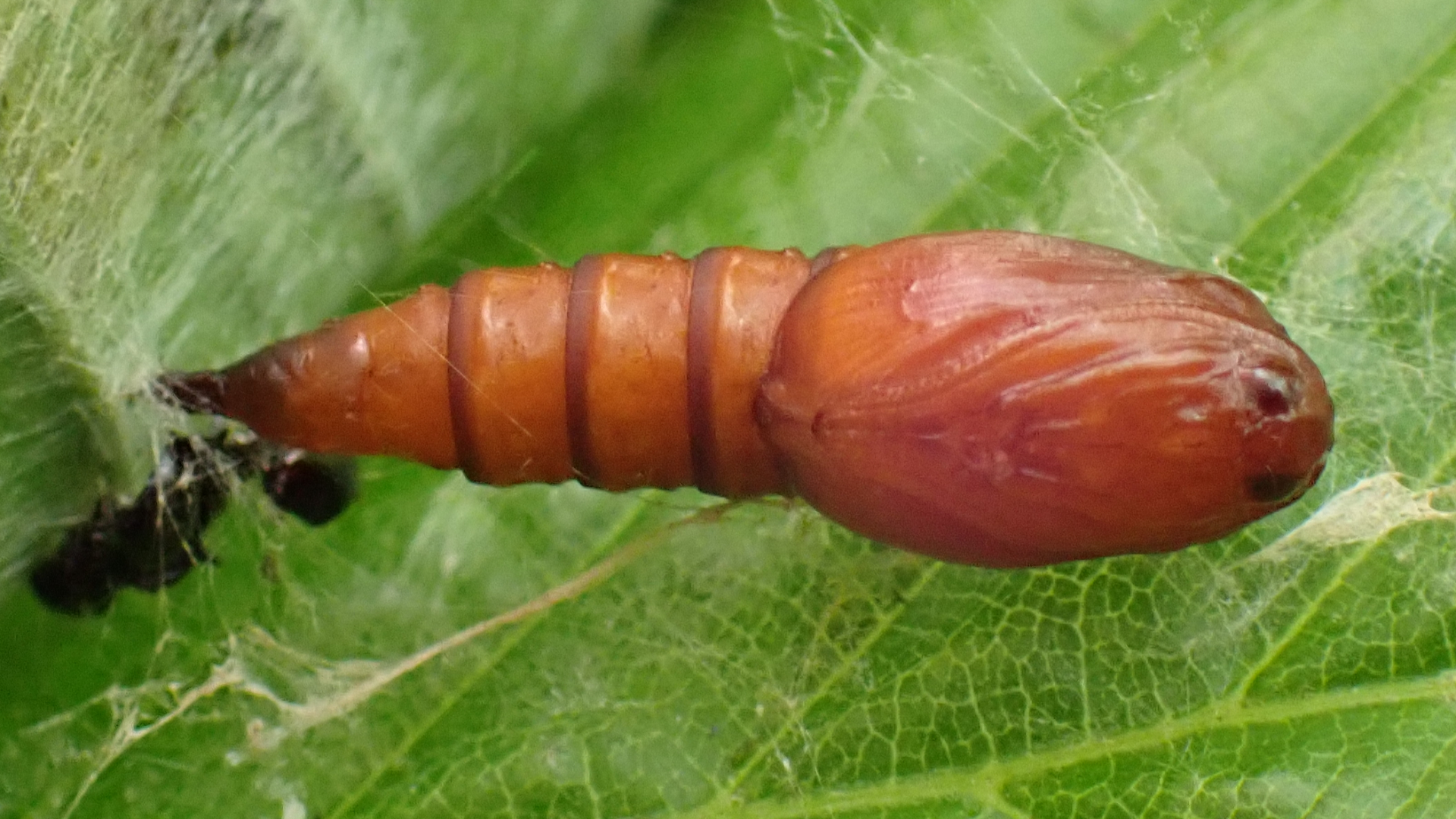
© Raymond Small TQ4793 06/06/2024 Pupa
Archips crataegana
The caterpillar of this species feeds on a range of deciduous trees from inside a tightly-rolled leaf. Its pupa is attached to a leaf by webbing from which an adult will emerge. This moth is widespread across Britain but is not very common. It frequents mainly wooded habitats and flies from June to August. Adult females are larger with a darker ground colour than males and have a much more protruding apex on the forewing.
IRIS SAWFLY
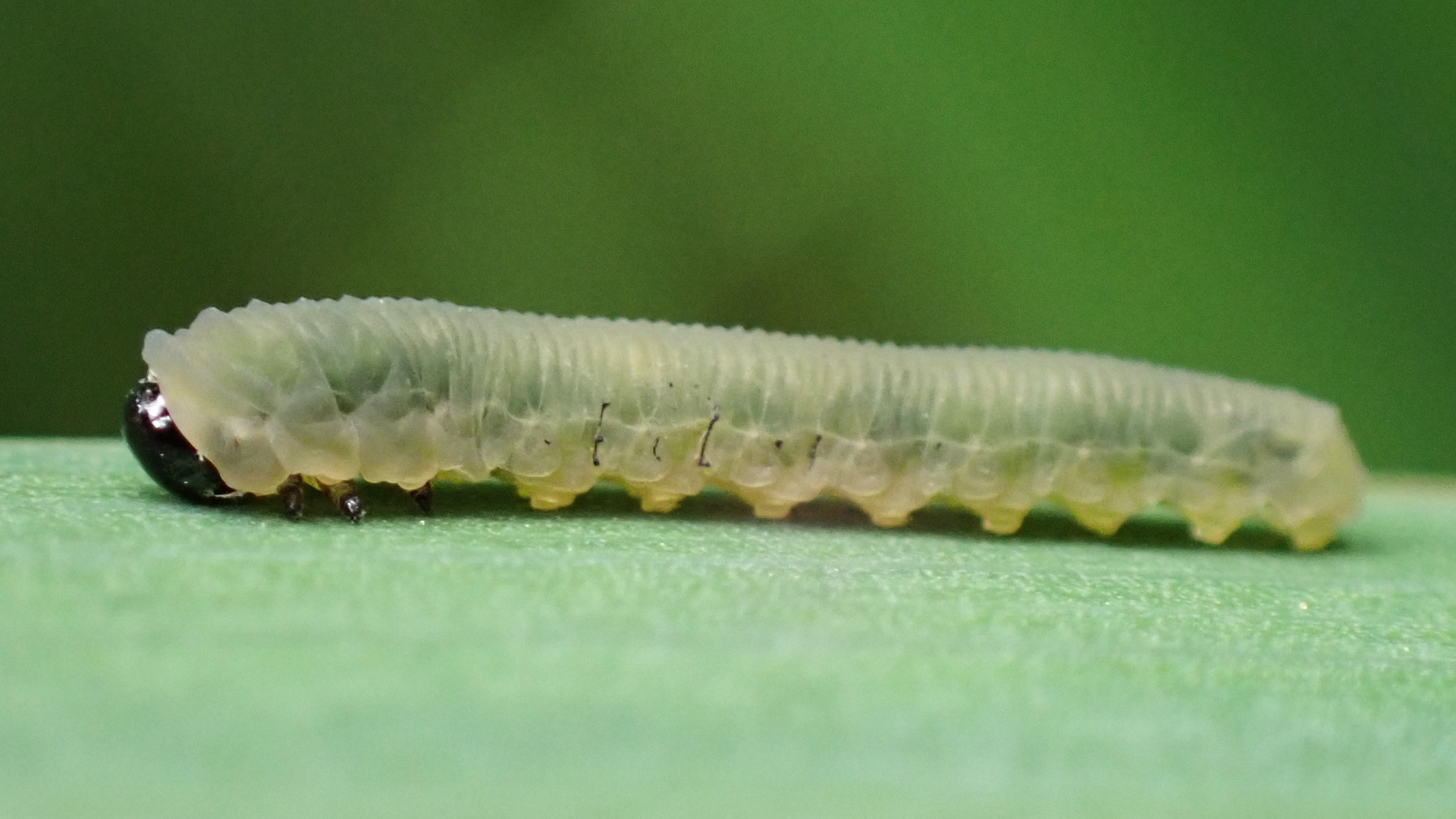
© Raymond Small TQ4793 06/06/2024
Rhadinoceraea micans
The totally-black adult sawfly is usually found flying where Yellow Iris the larval foodplant grows. Its larvae feed on plants growing in damp locations consuming strips from the leaf edges. Adults appear during late spring and summer.
CORRESPONDENCE
(A selection from emails received this month)
Thanks for the blog, too many insects for me but never mind. I was horrified by the chick killed by a dog, surely you or one of the others can get whoever runs the bl**dy place to put notices in all prominent positions around the lake ensuring all dogs are kept on a lead in the area. If necessary threaten to fine people who are caught taking no notice. Most people are sensible but clearly not all, with some being outright ignorant. More must be done. Roger Smith
Just to let you know that Three cornered leek is now known a Three cornered garlic. It seems to be taking over the garden here. It tastes good in salad. Gillian Foster
Thanks for your monthly journals. I wanted to check that you are aware of the sad news about Jonathan Jukes (WT manager). Very sadly he passed away. Grace Davis, Woodland Trust It was very sad and unexpected news to learn about Jonathan. A lot of people appreciated the work he was doing at Hainault Forest. Thank you for letting the website know.
I don't thank you often enough but these mails are thoroughly enjoyed here, thank you.
Edwin Prevost
Another excellent Journal, forwarded to me by Debi as usual. I have just read every word and enjoyed all your photos with my morning tea and toast. A pleasant way to start my day. I spent all my school years in Seven Kings, attending Downshall Infants, Juniors & Sec Modern. Hainault Forest was my stomping and fishing ground as a school boy. A great area to be exploring at that age. All reached on cycles with my mates. Happy memories. Many thanks.
David Hale
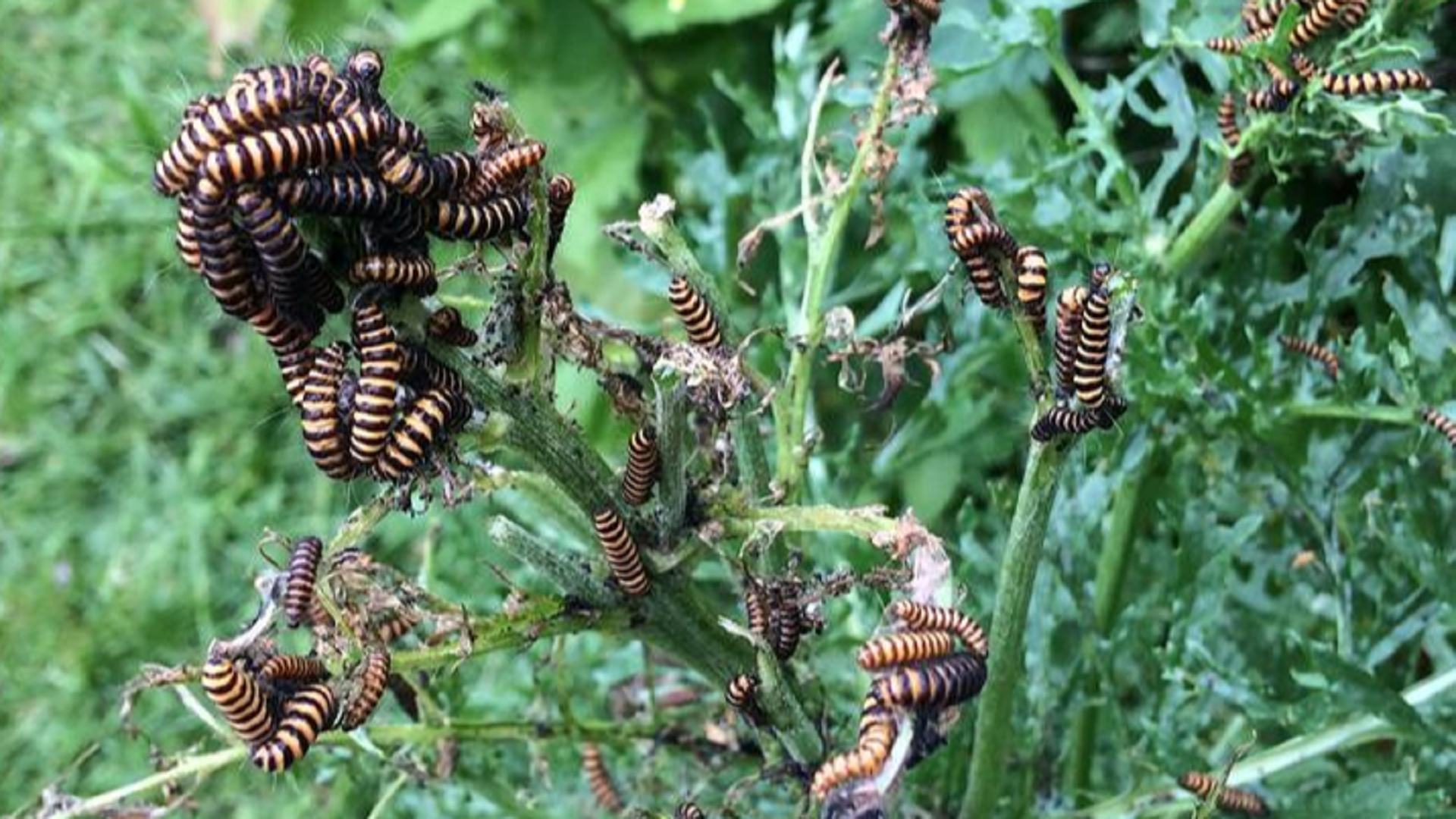
Cinnabar moth caterpillars on the Ragwort in our garden. Janet Galpin
Thank you to everyone that has contributed with pictures, emails, information and identifications.
GREY SQUIRREL
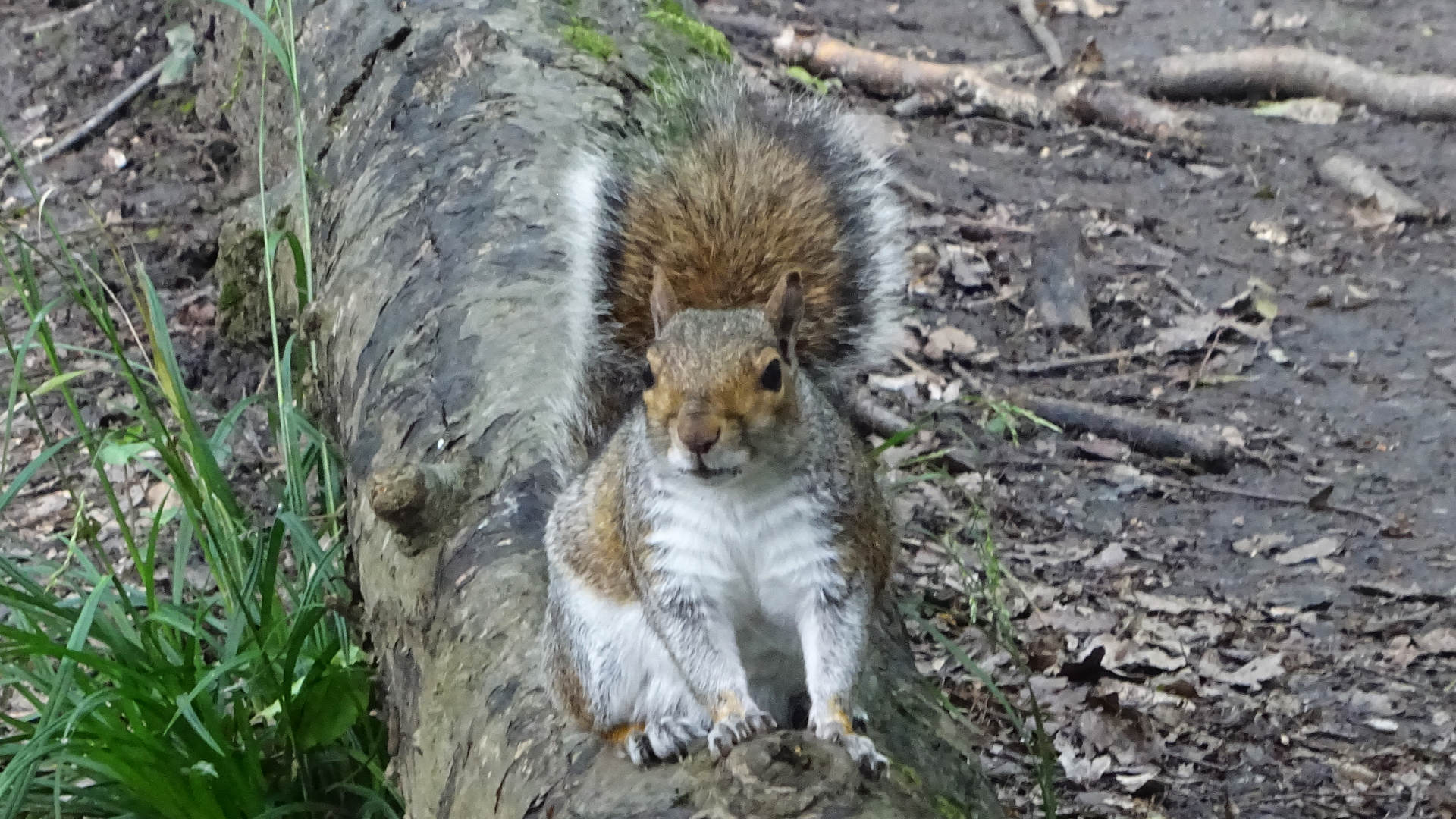
© Raymond Small
TQ4792 10/06/2024
More next month. That's all folks!